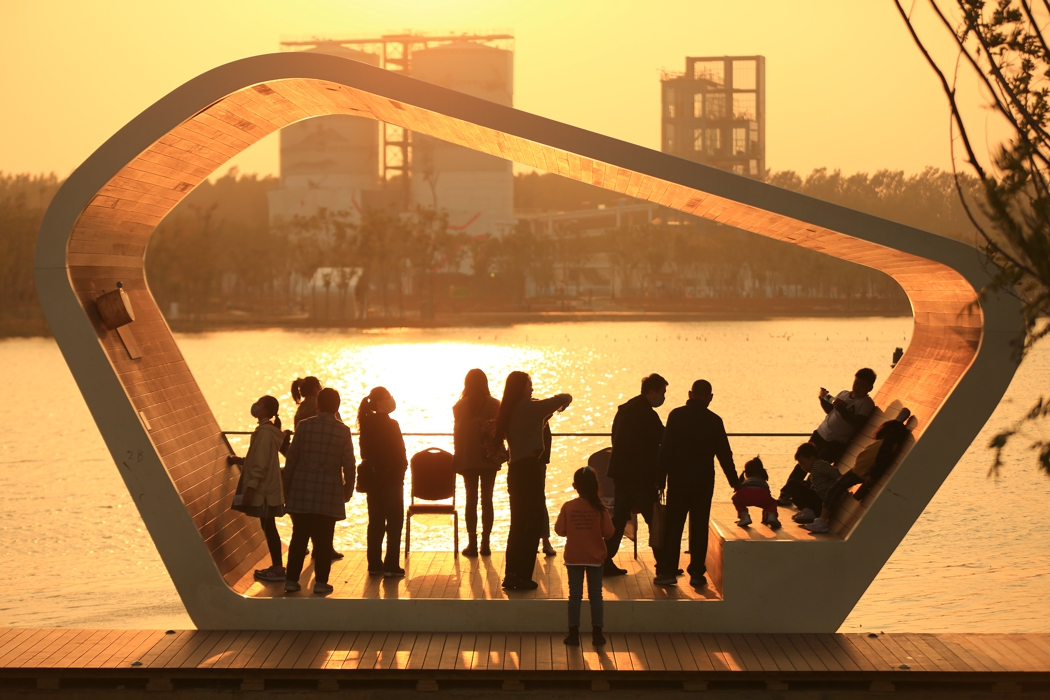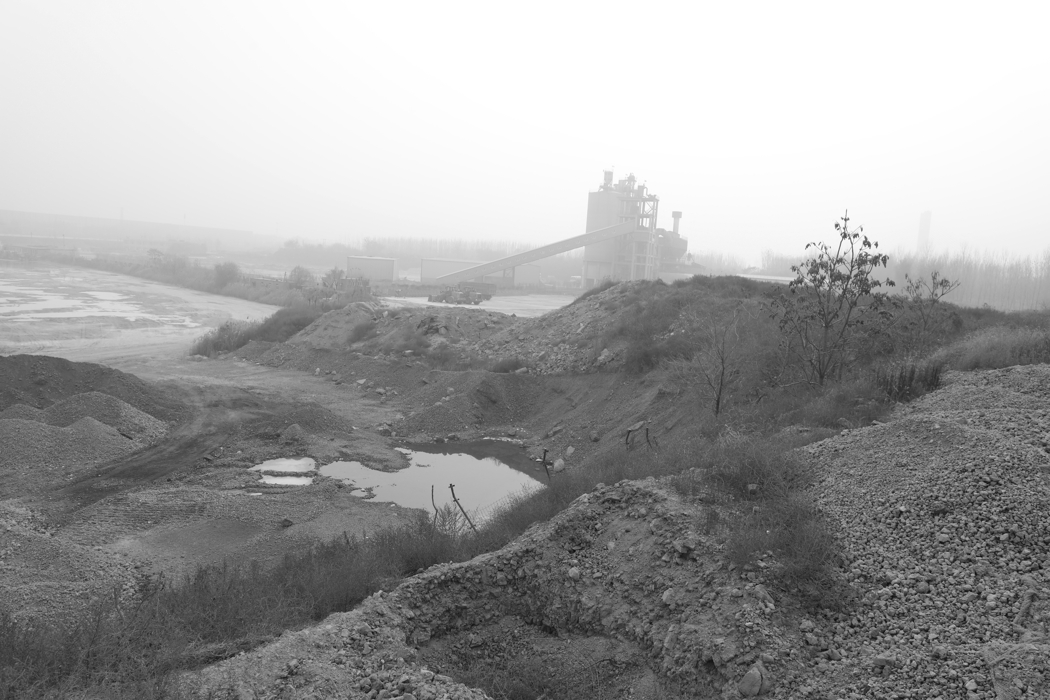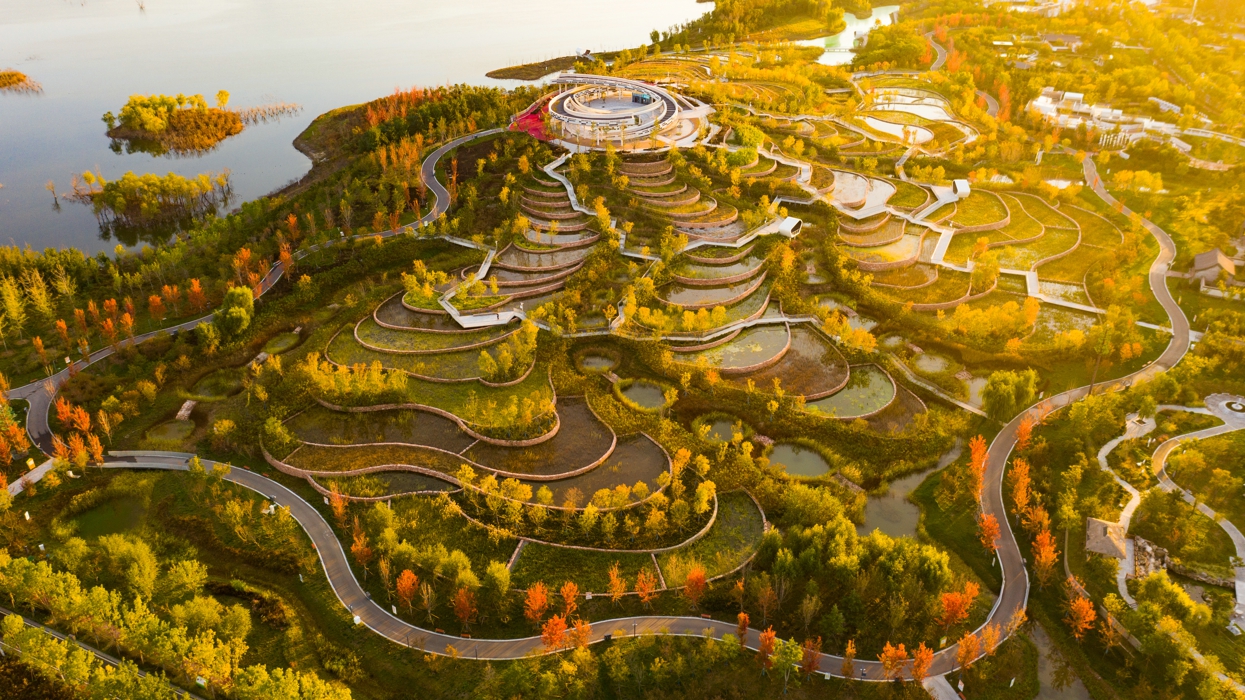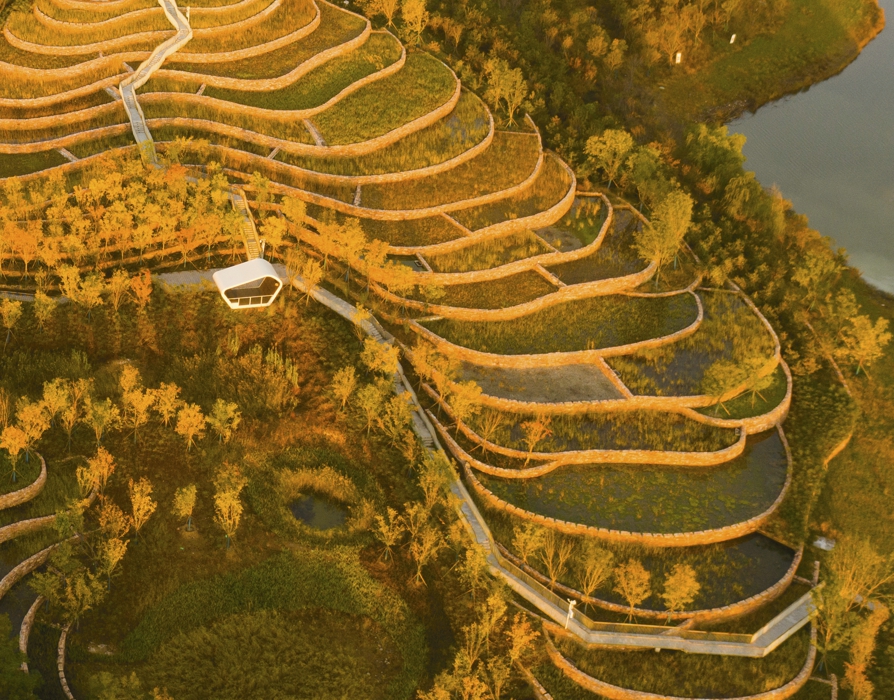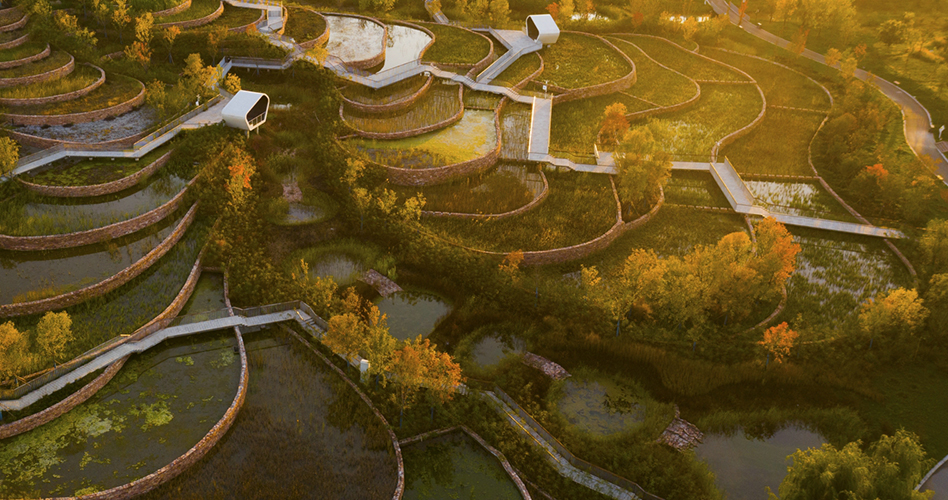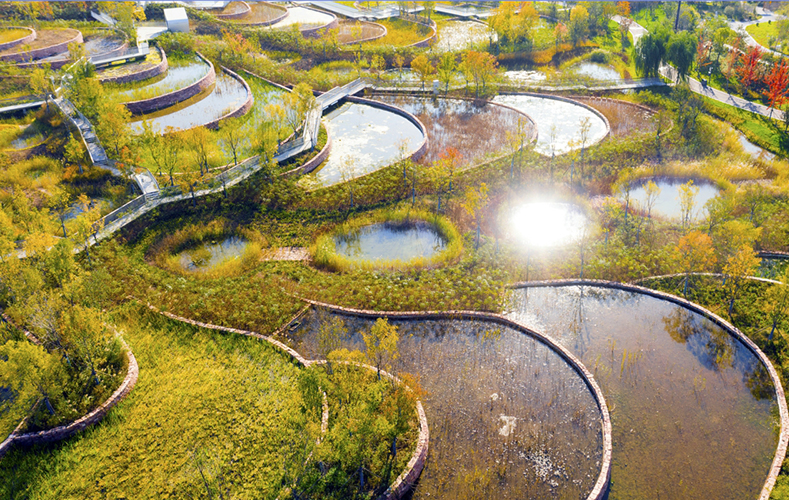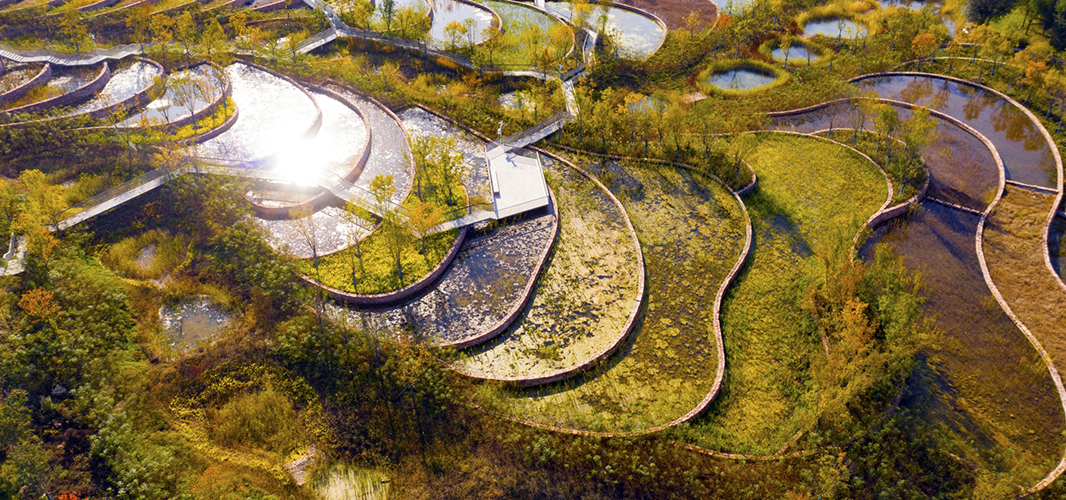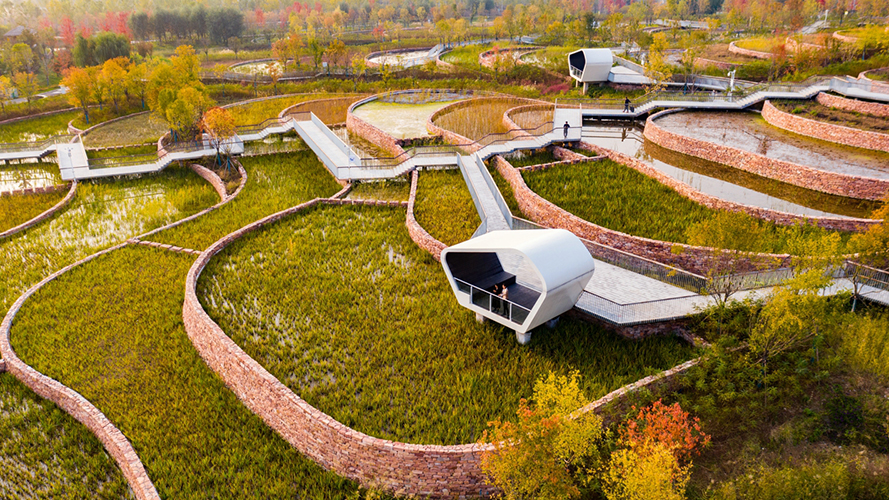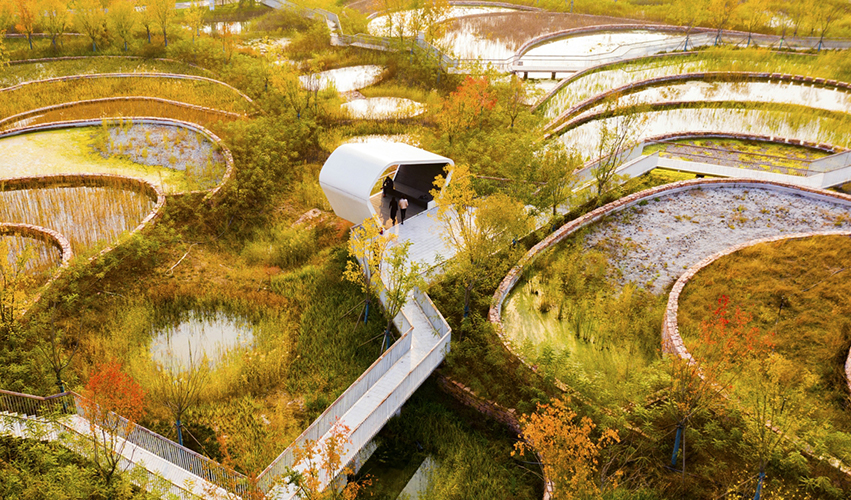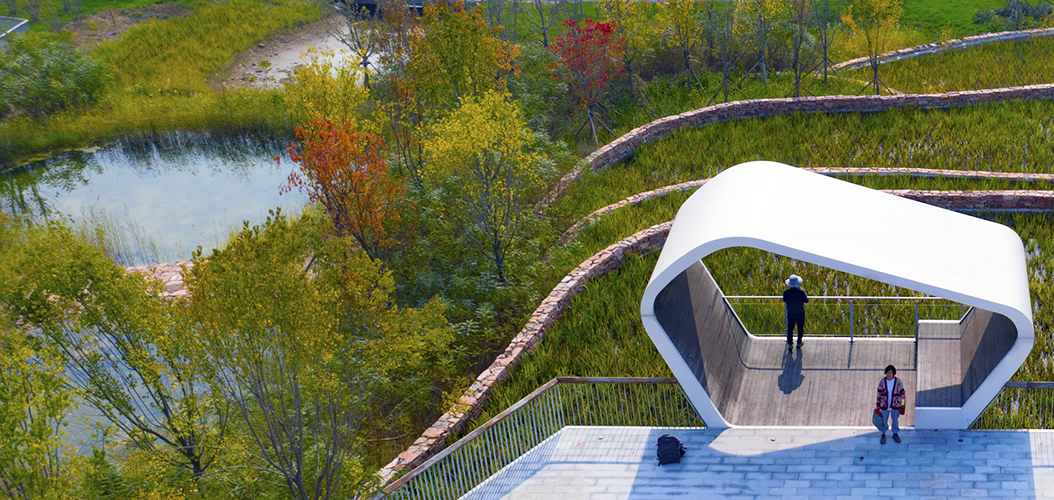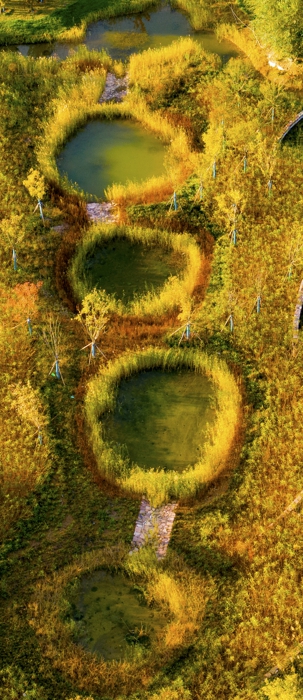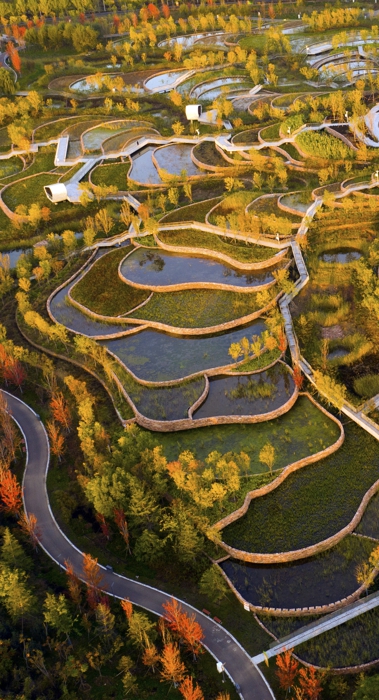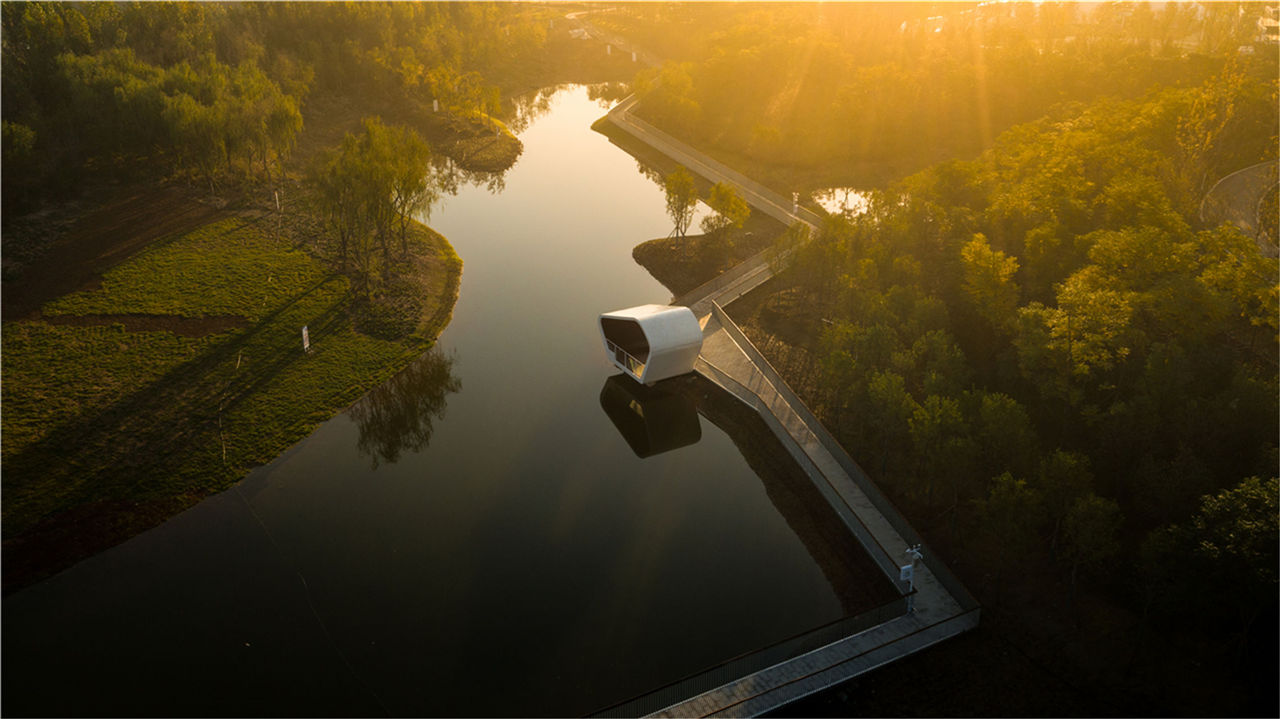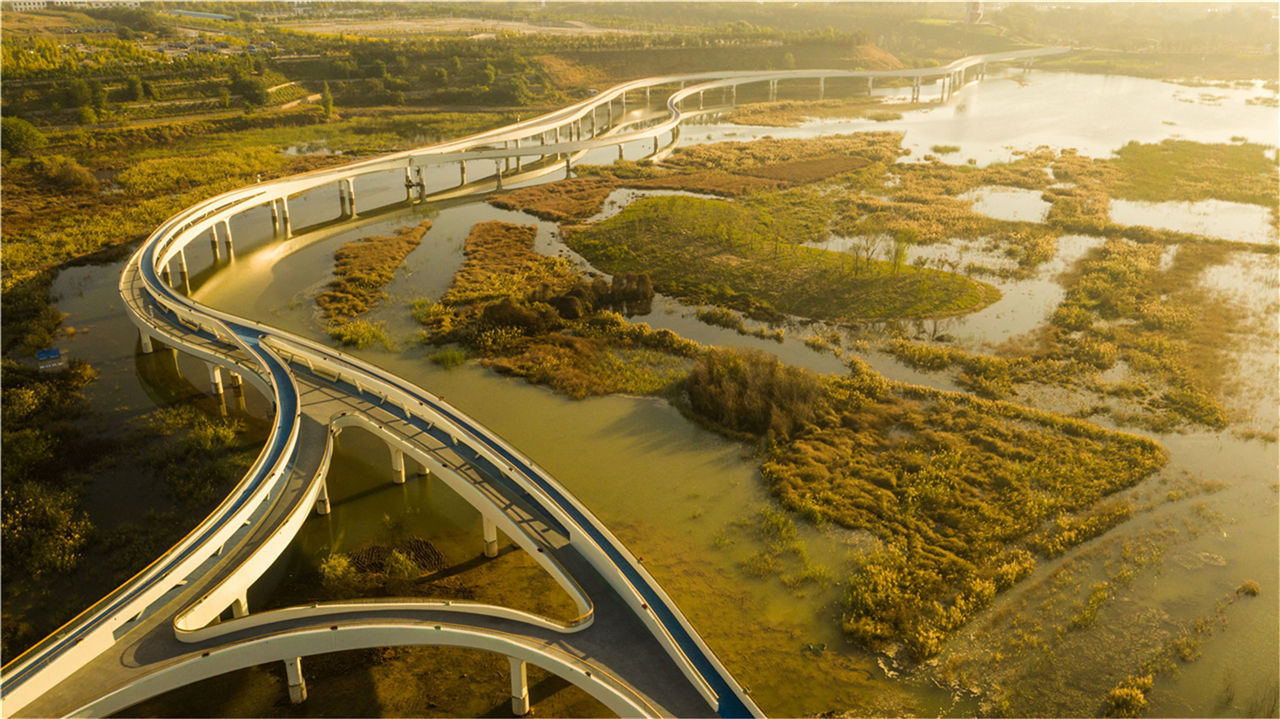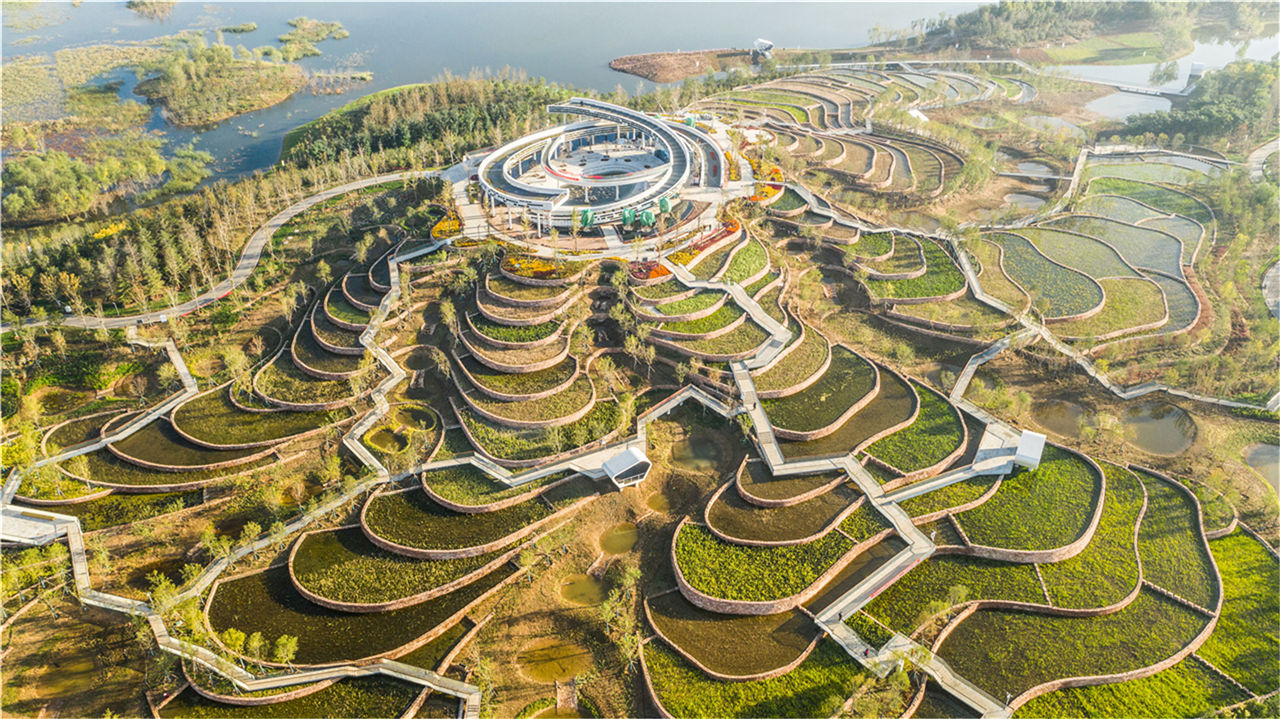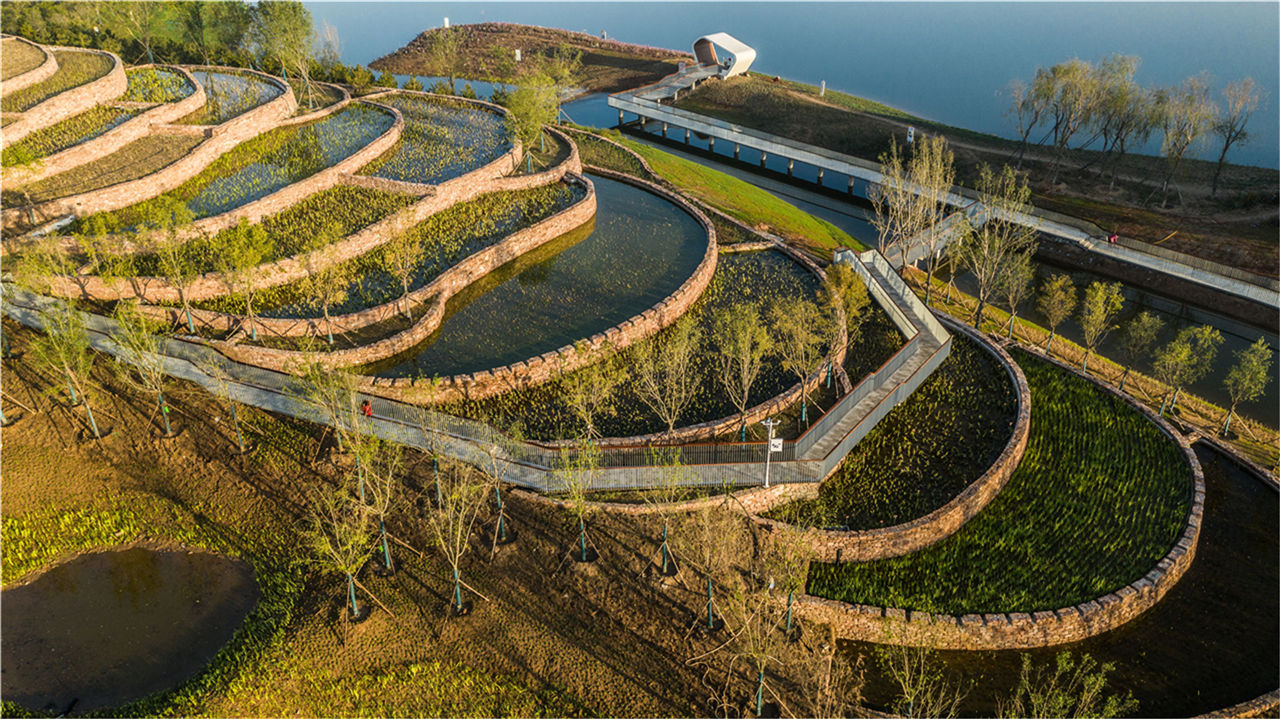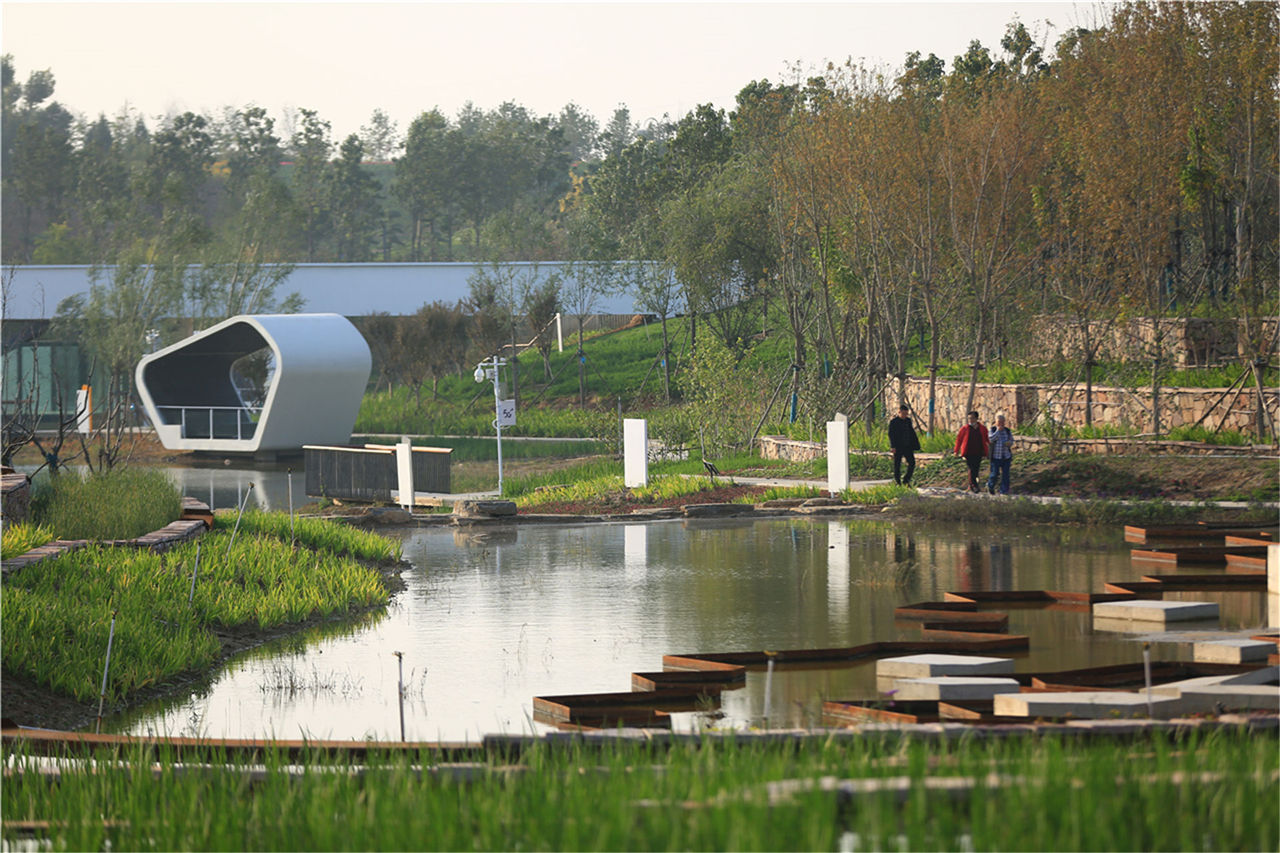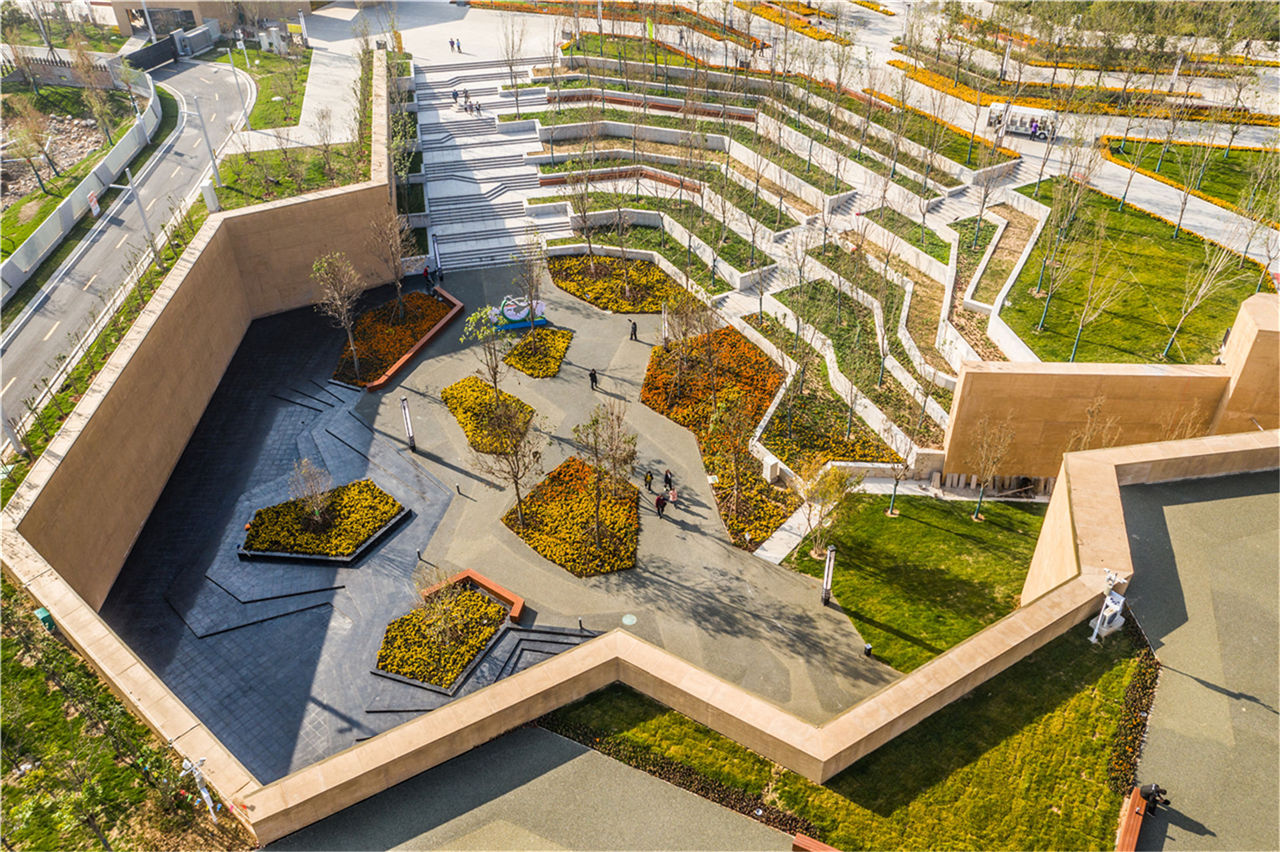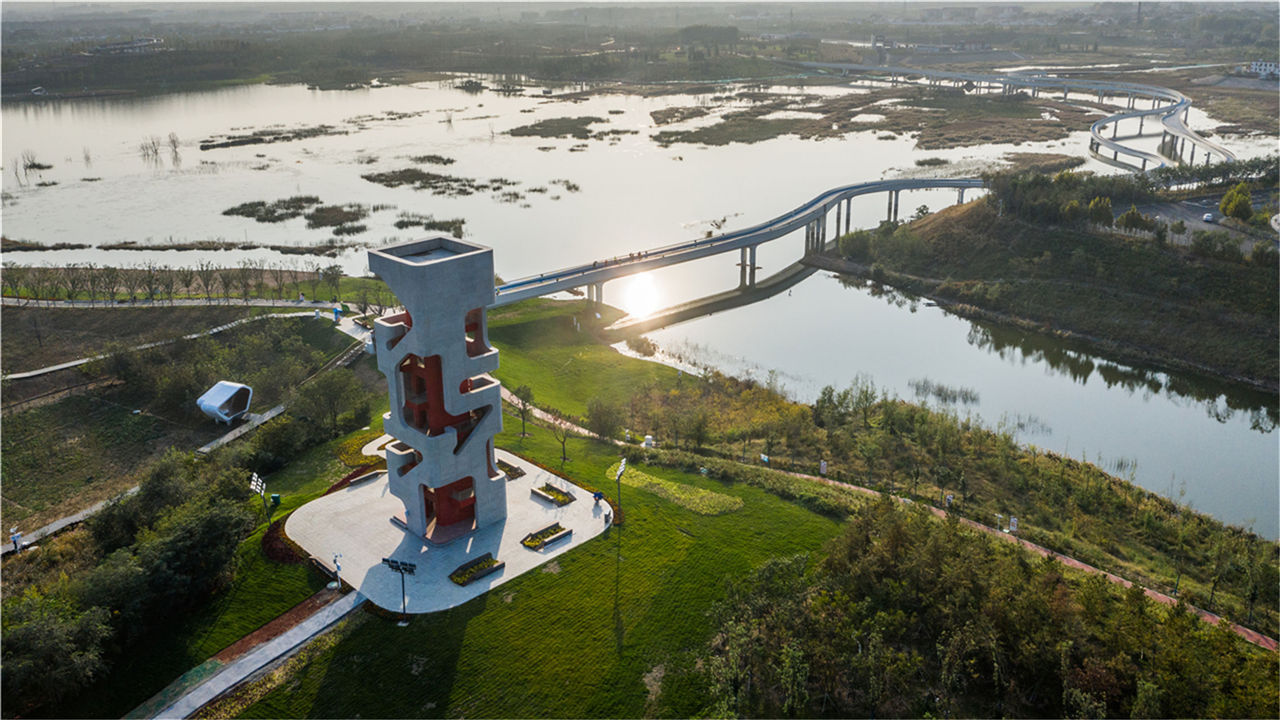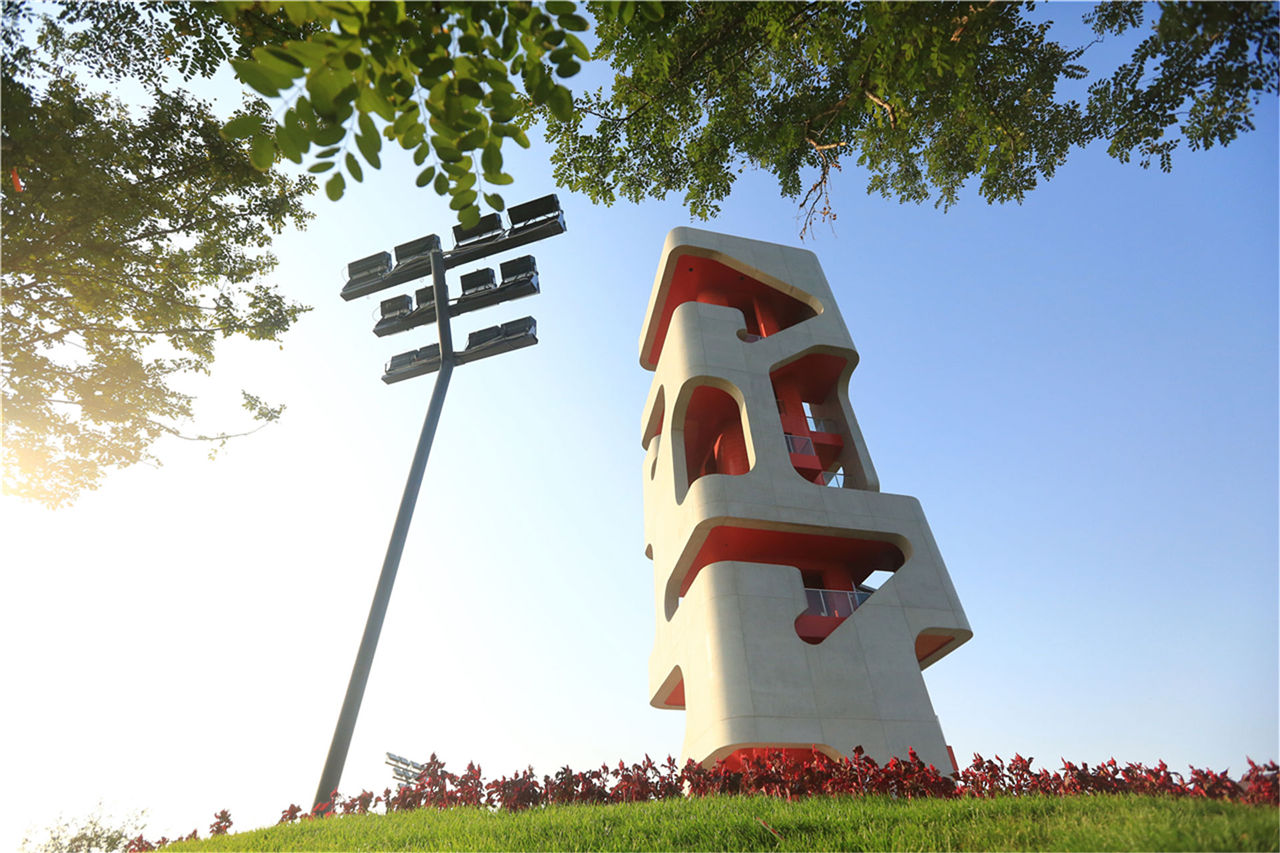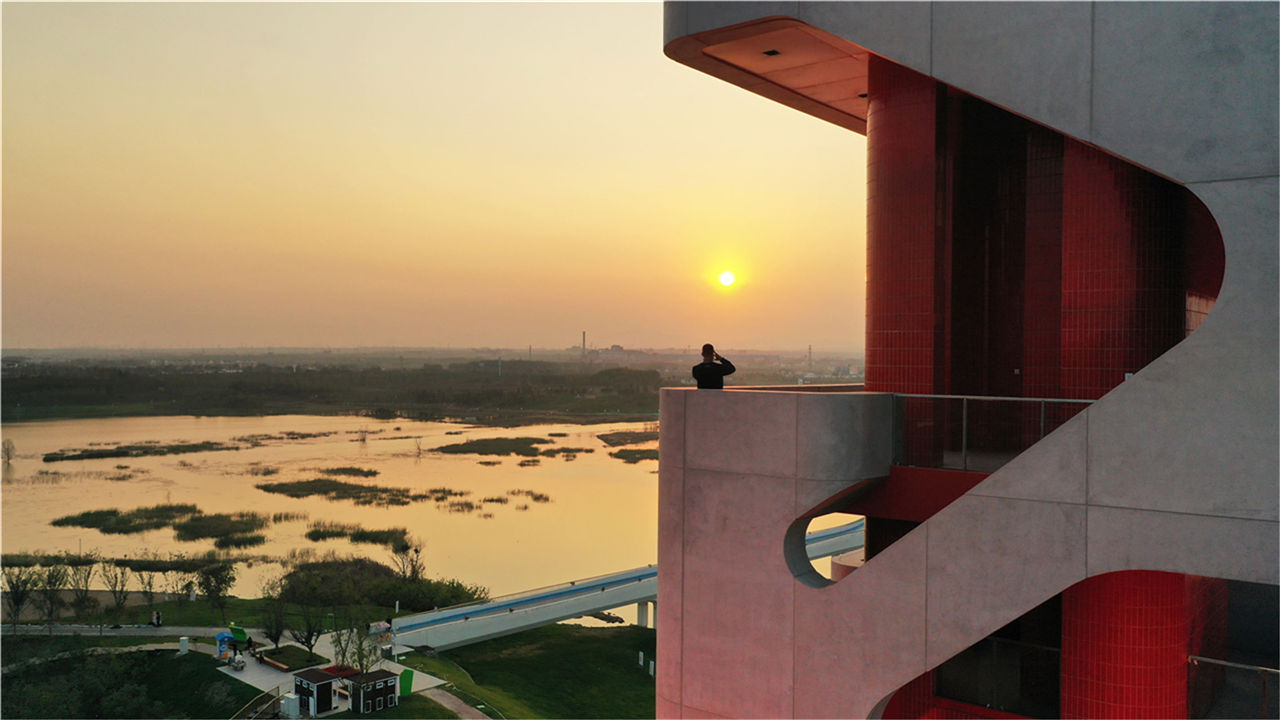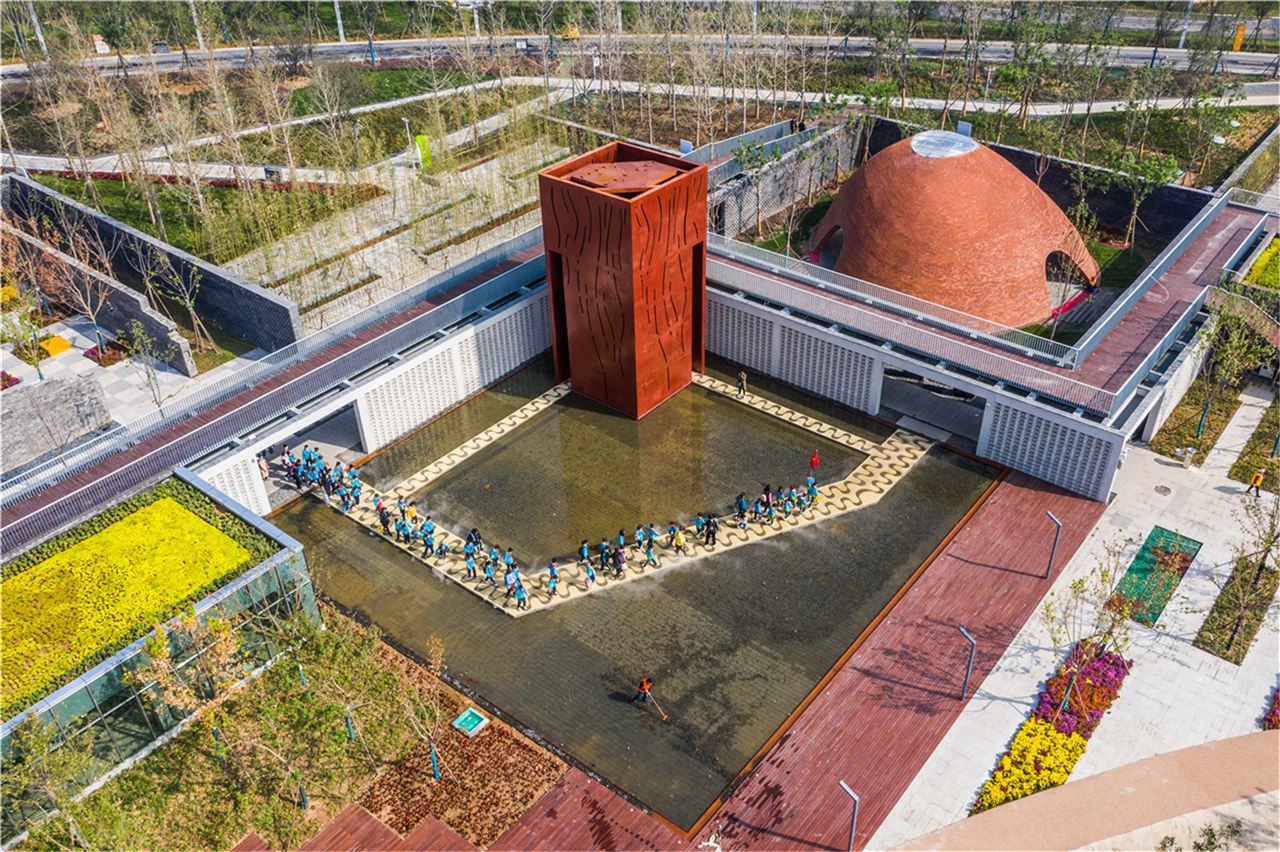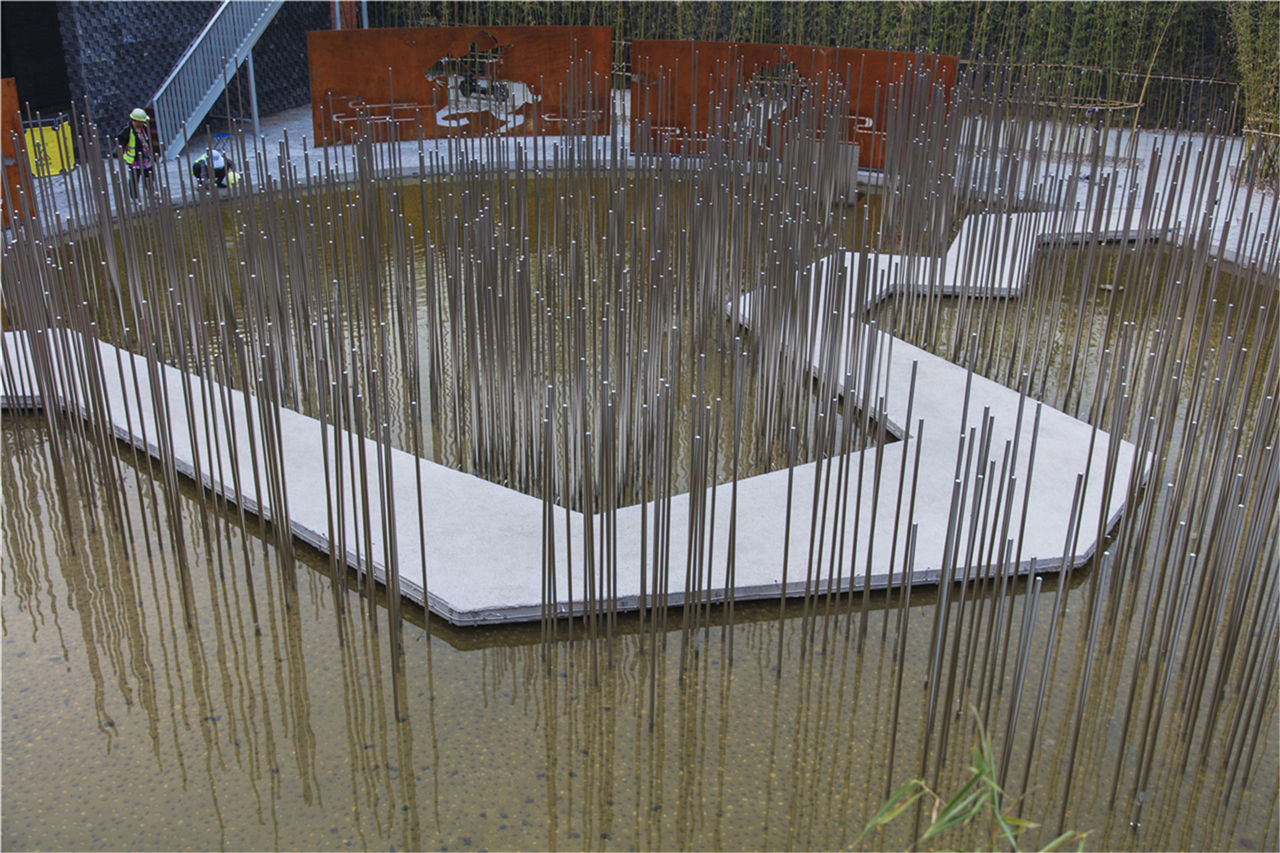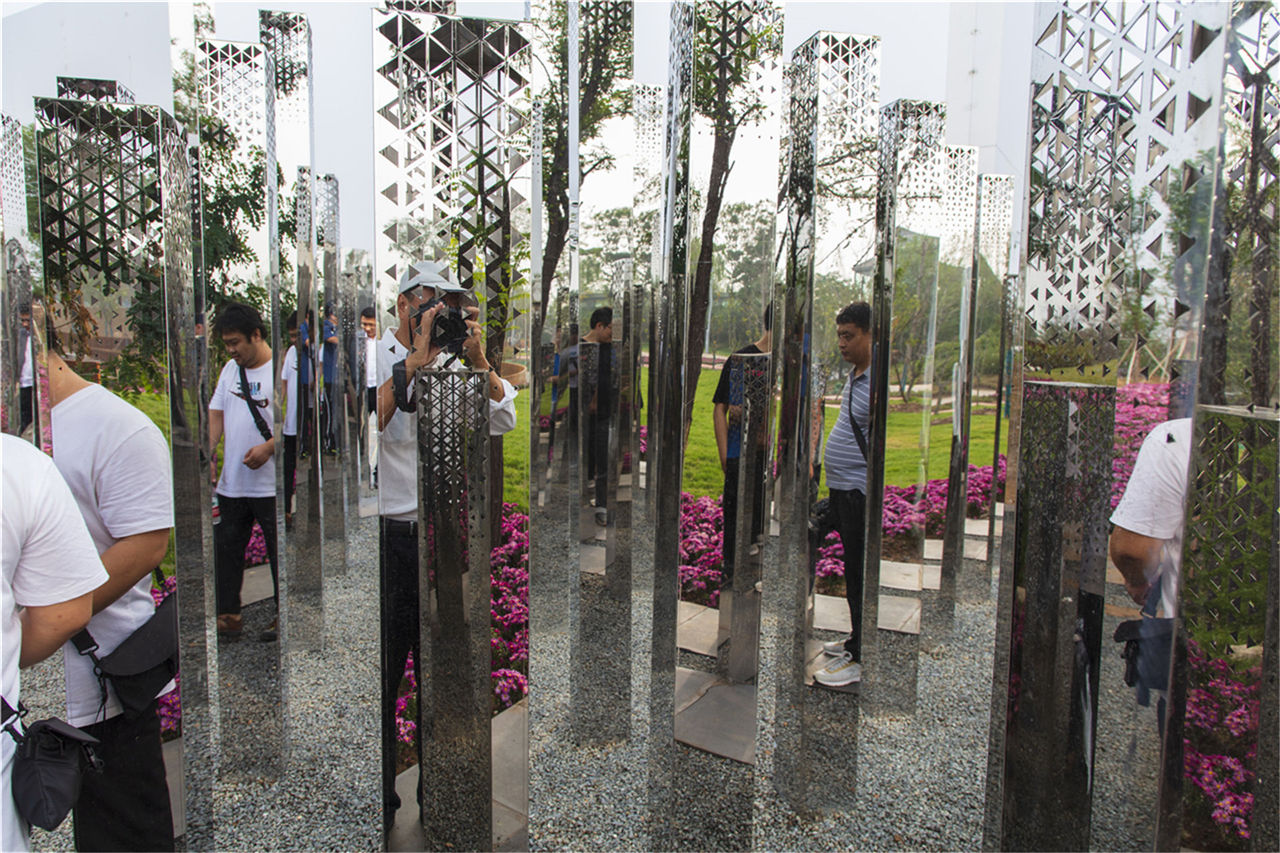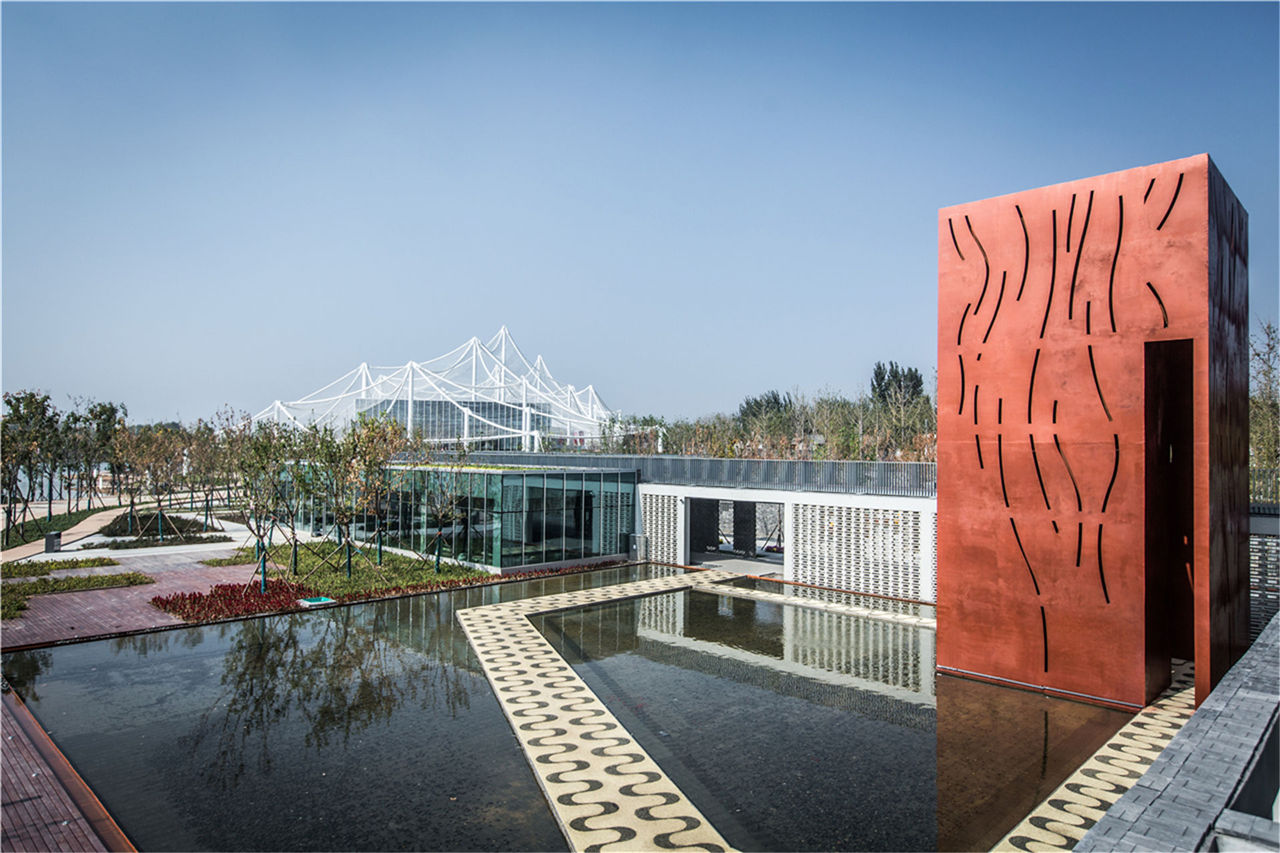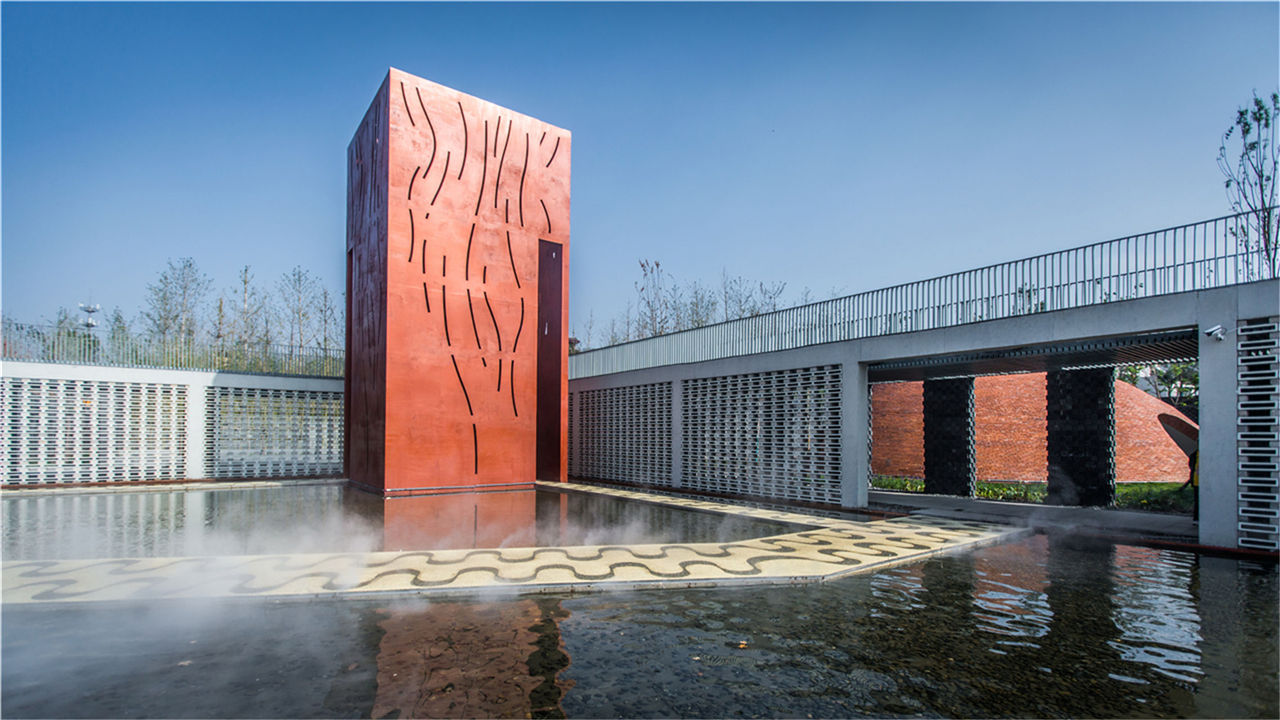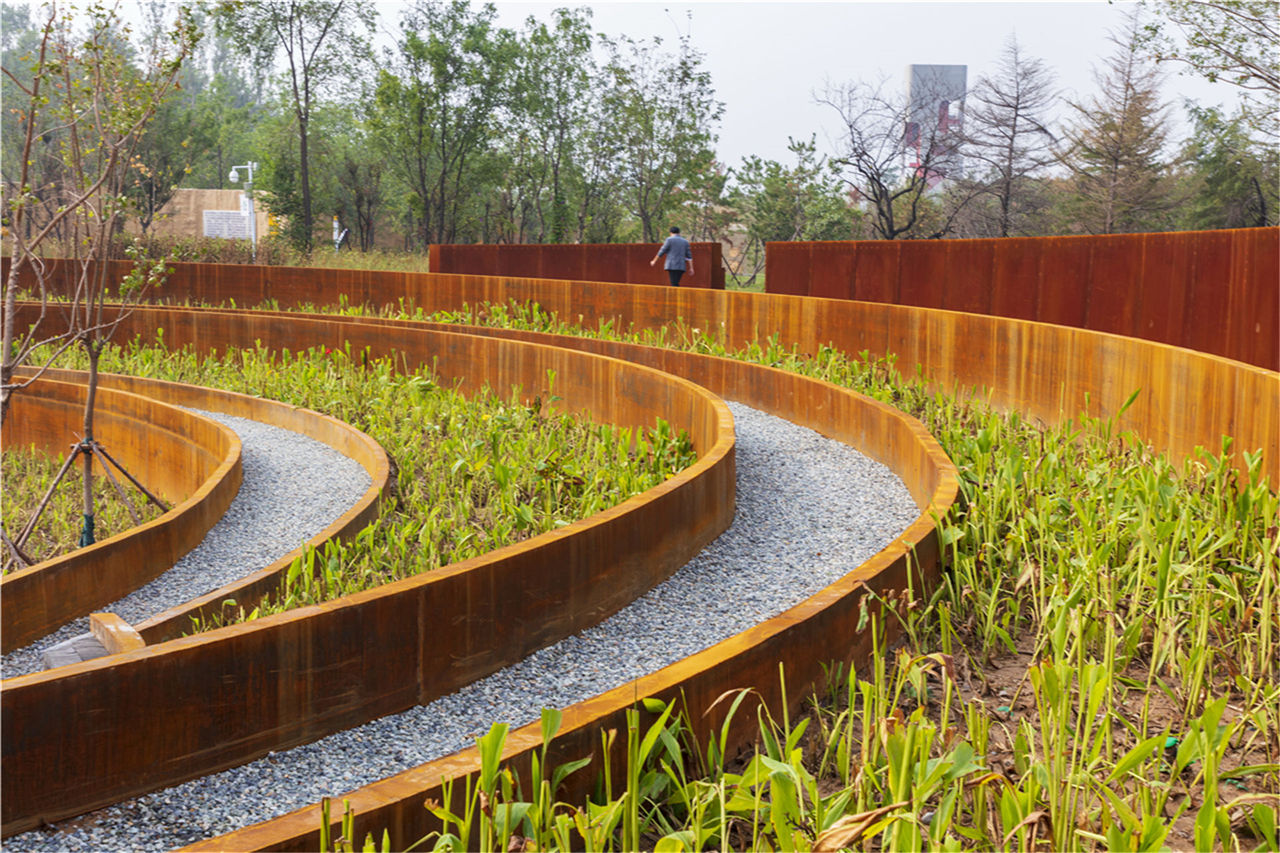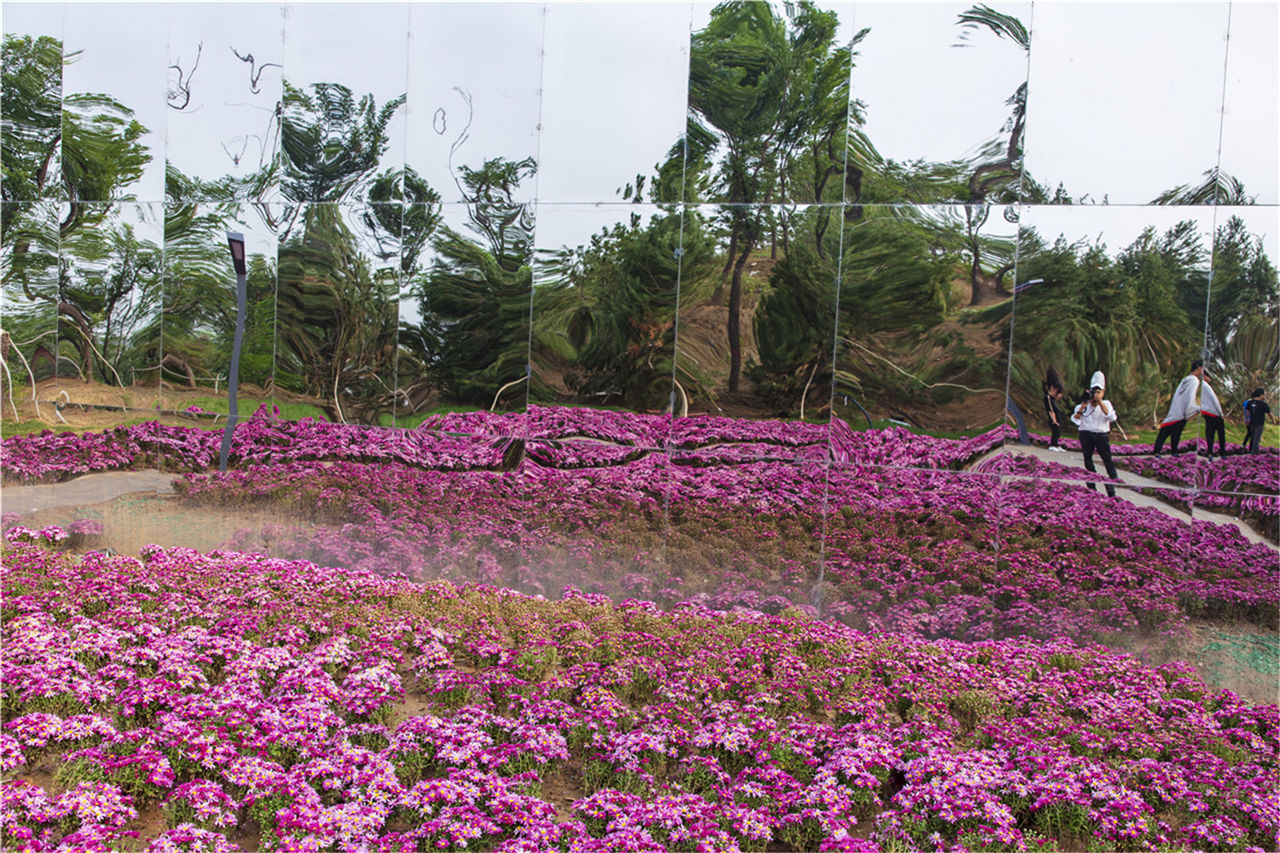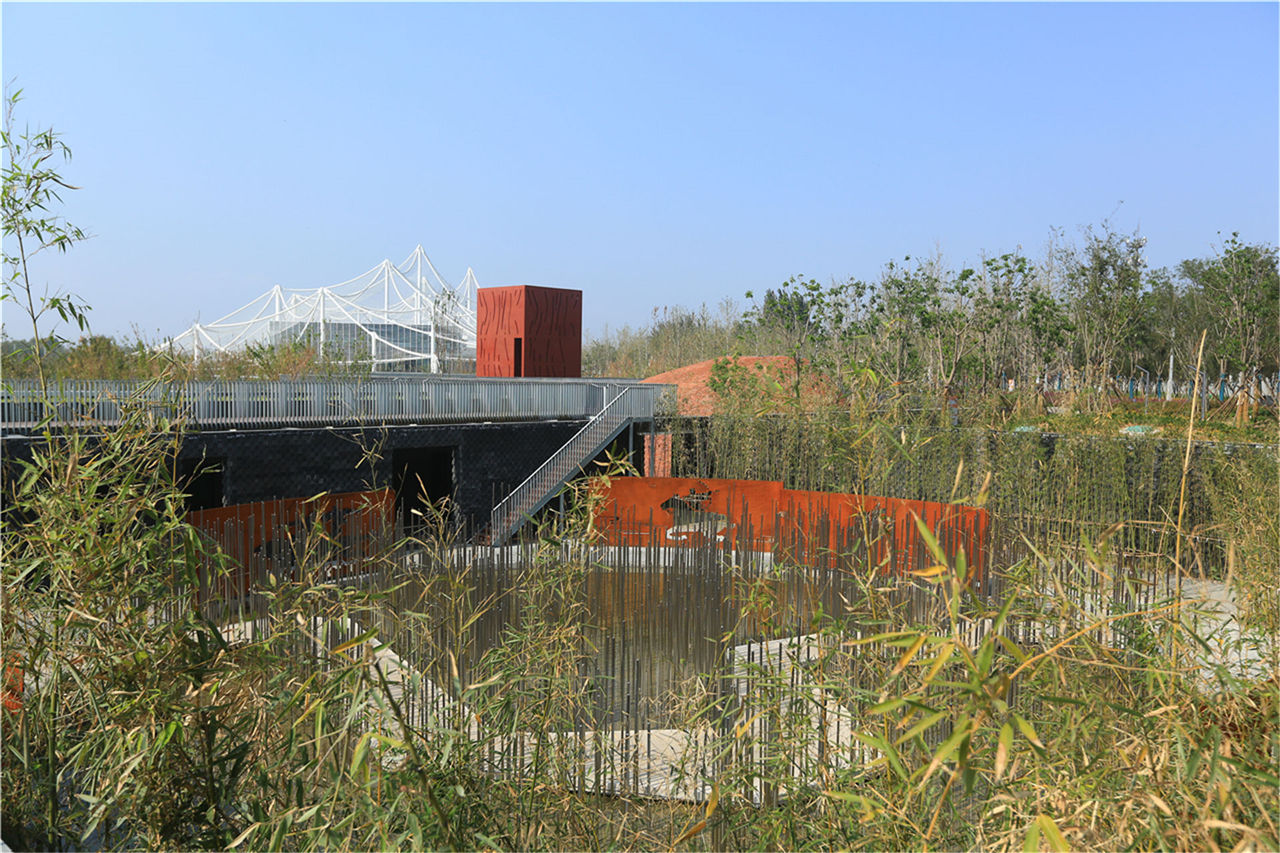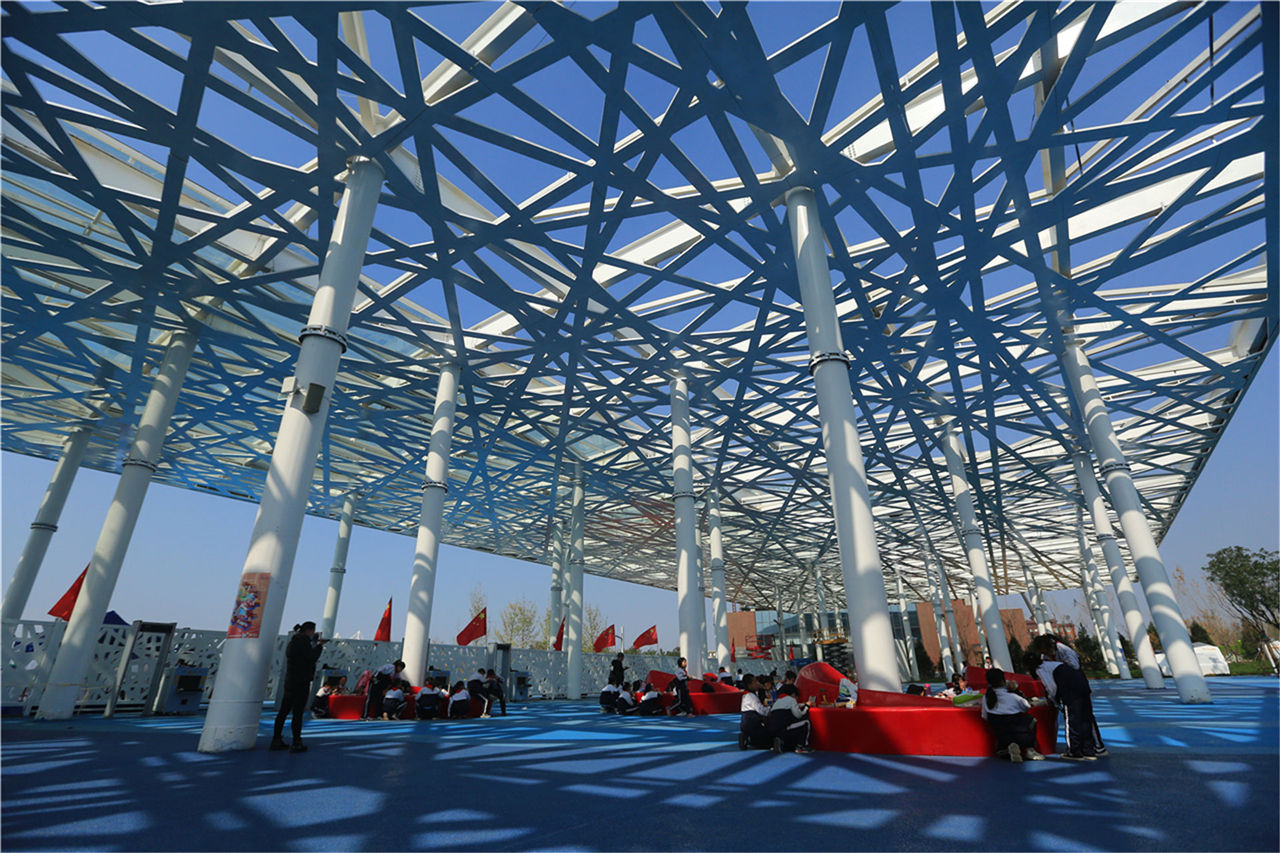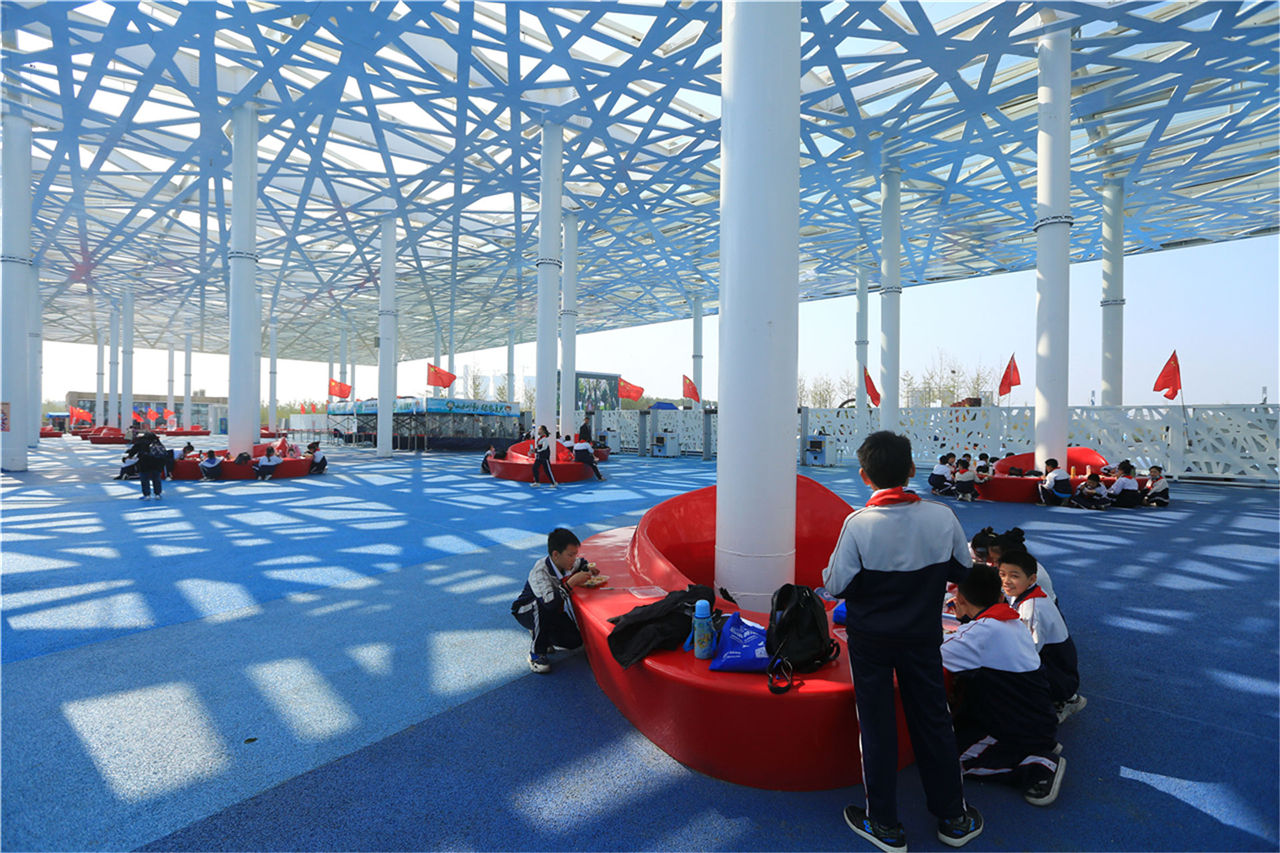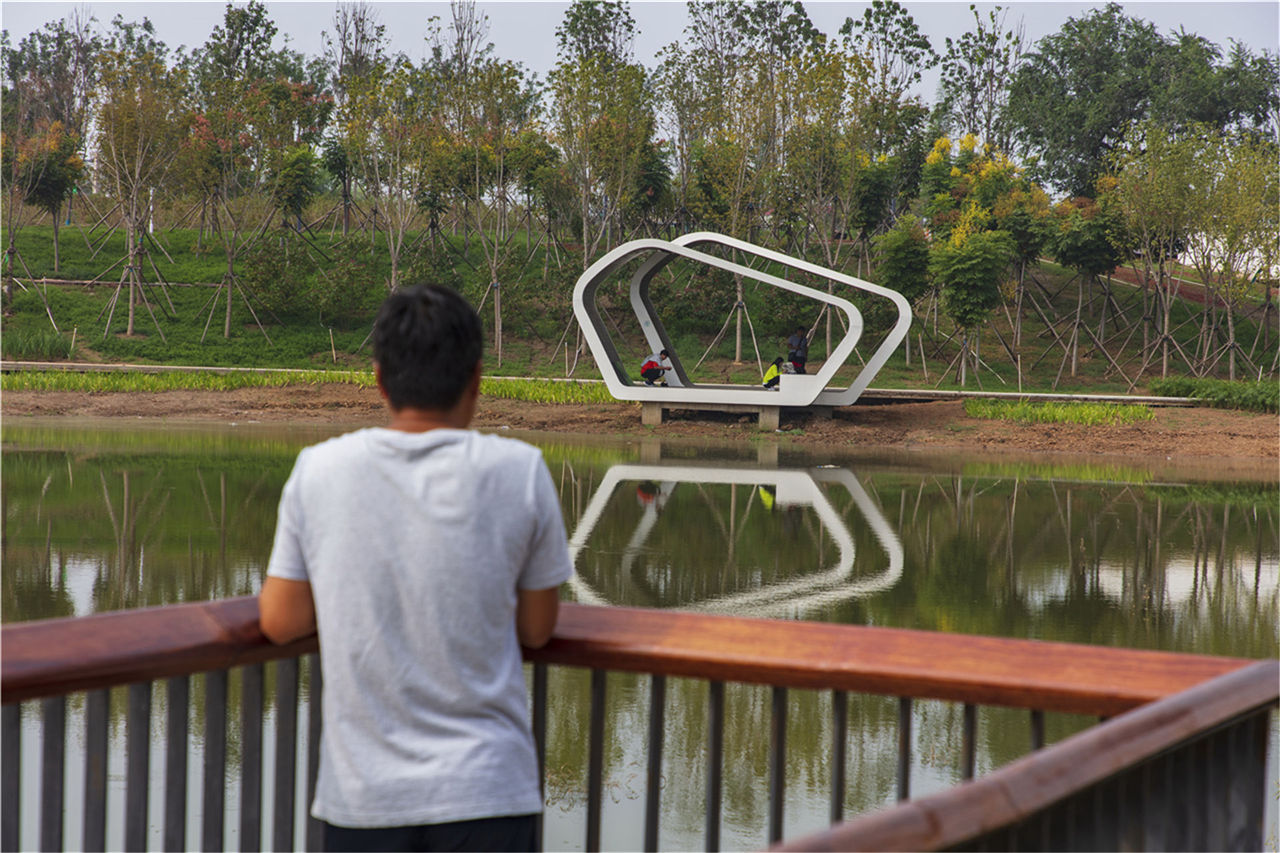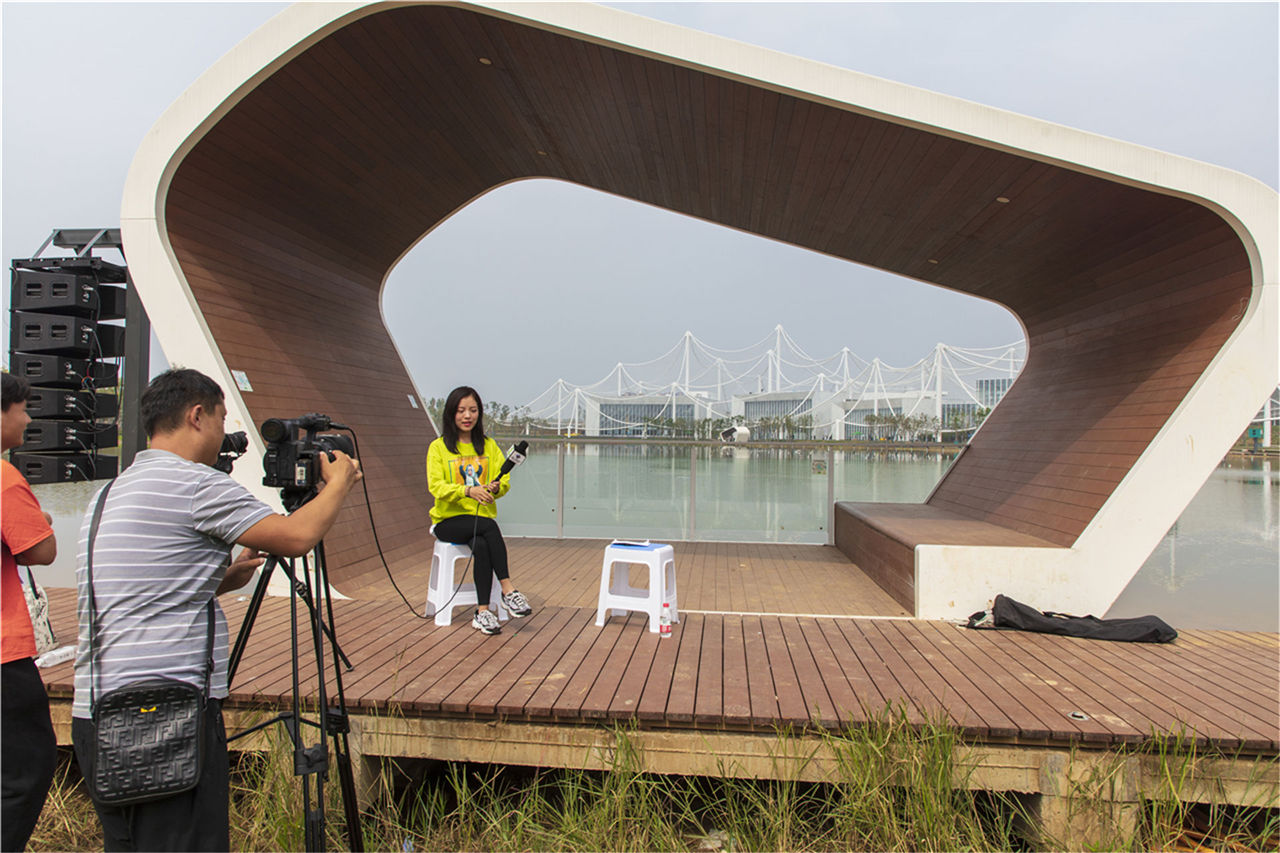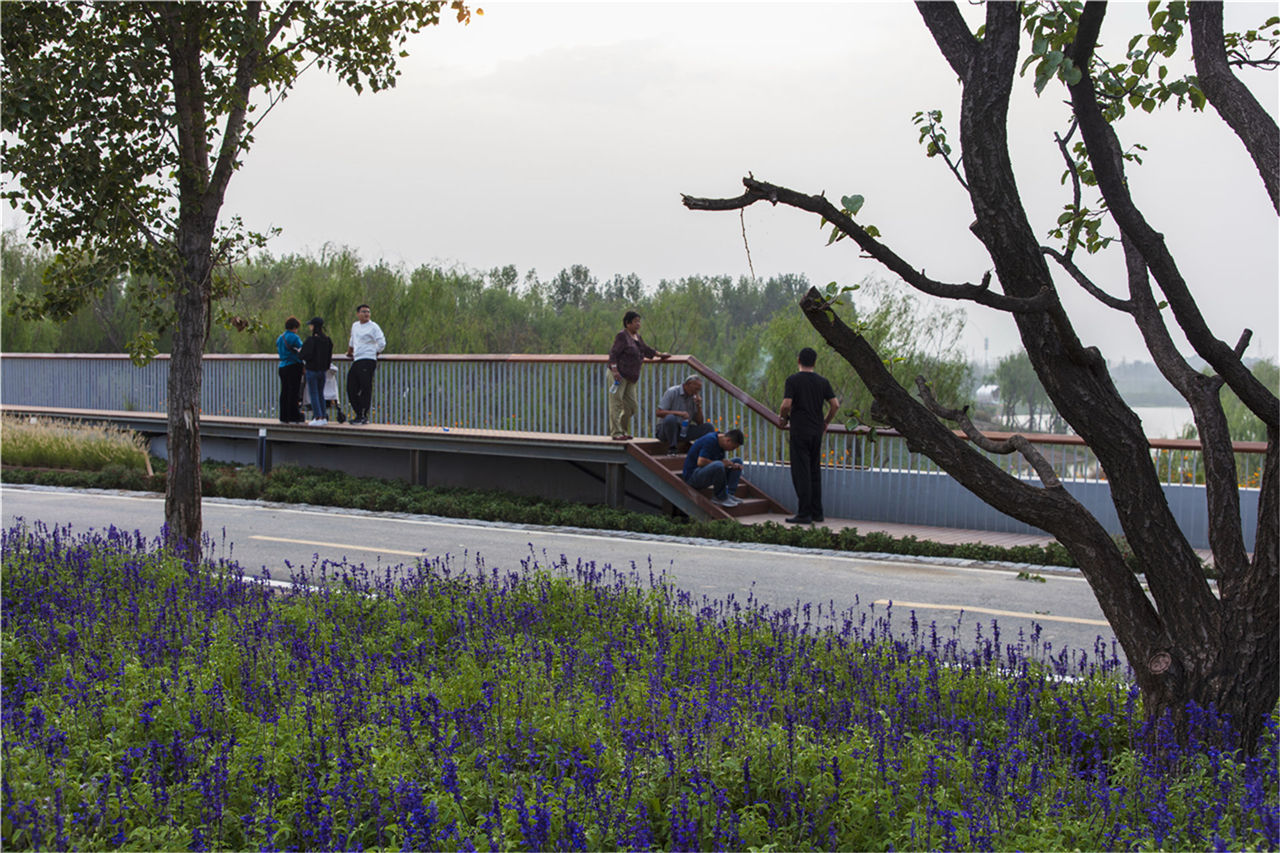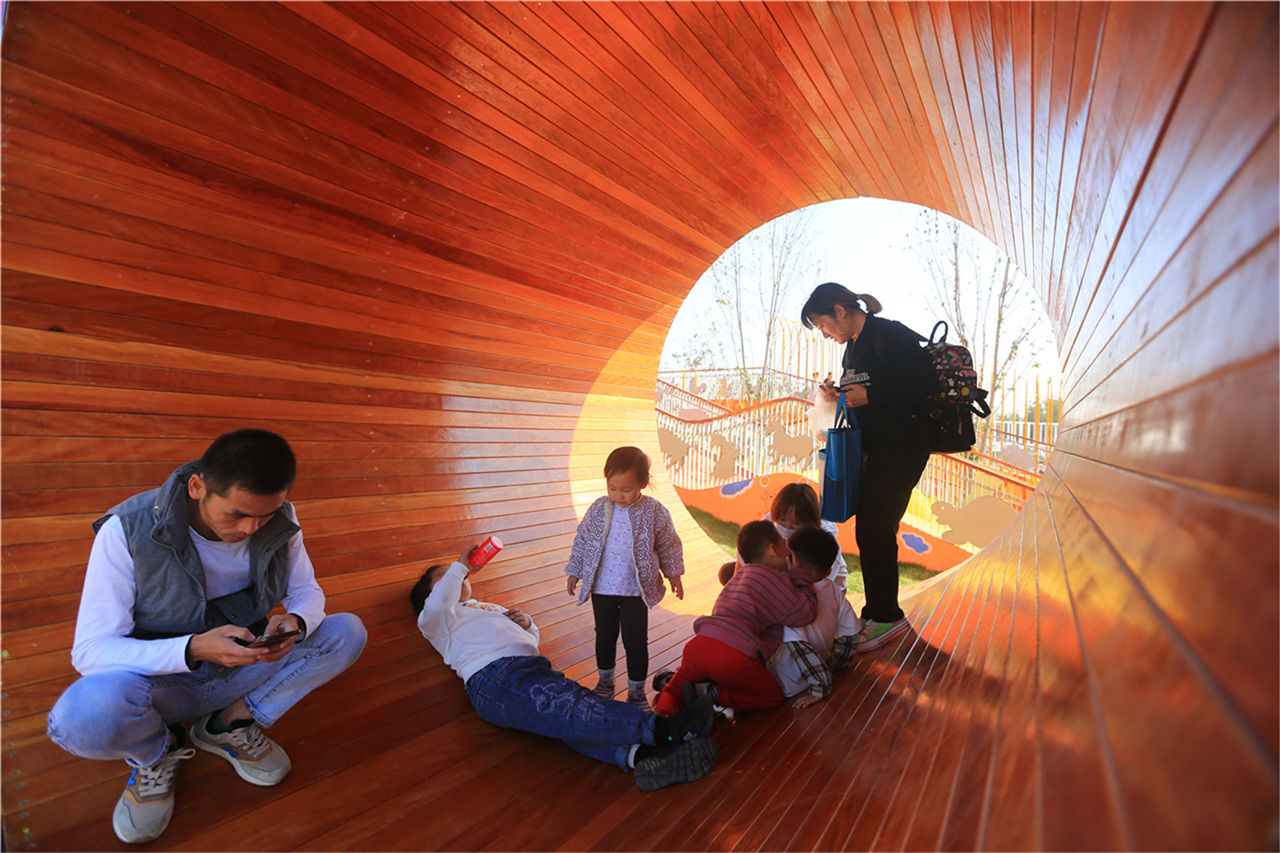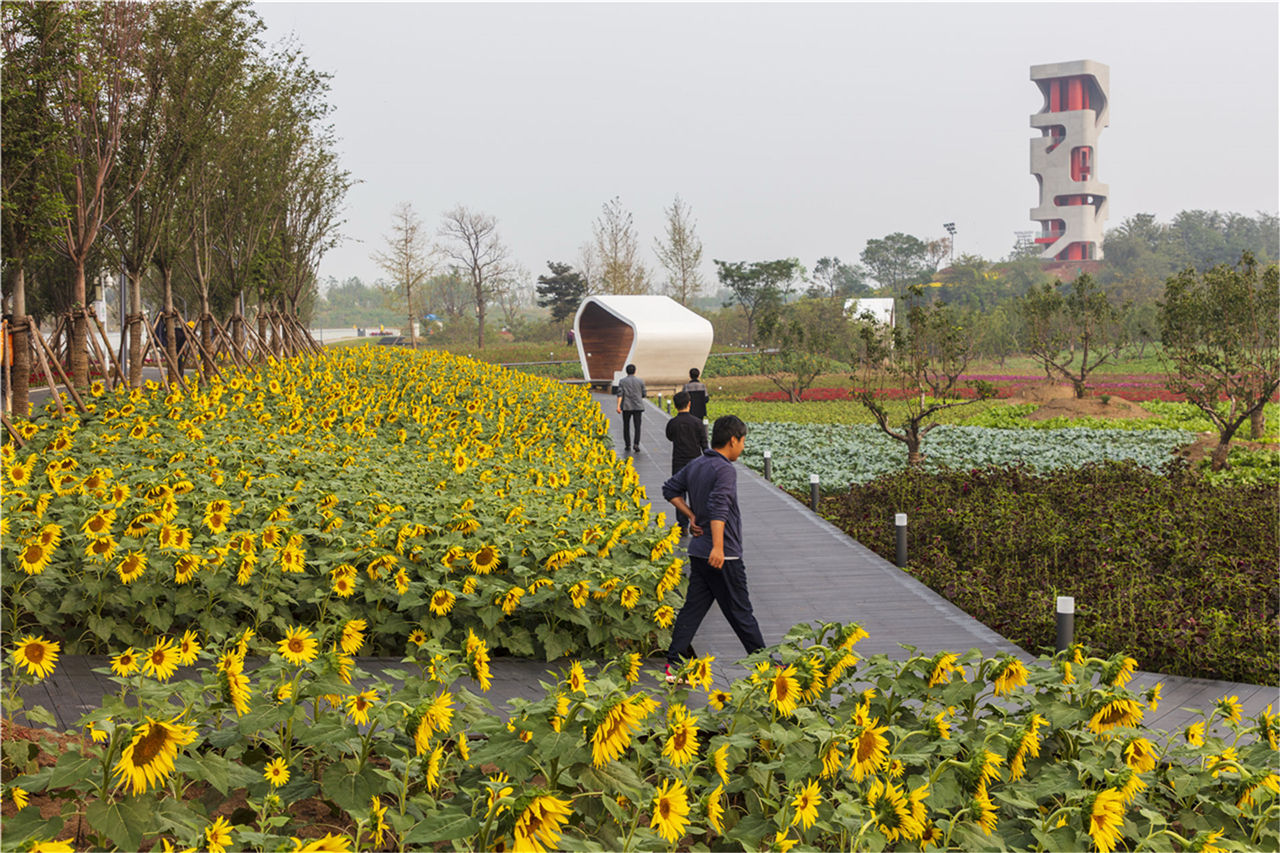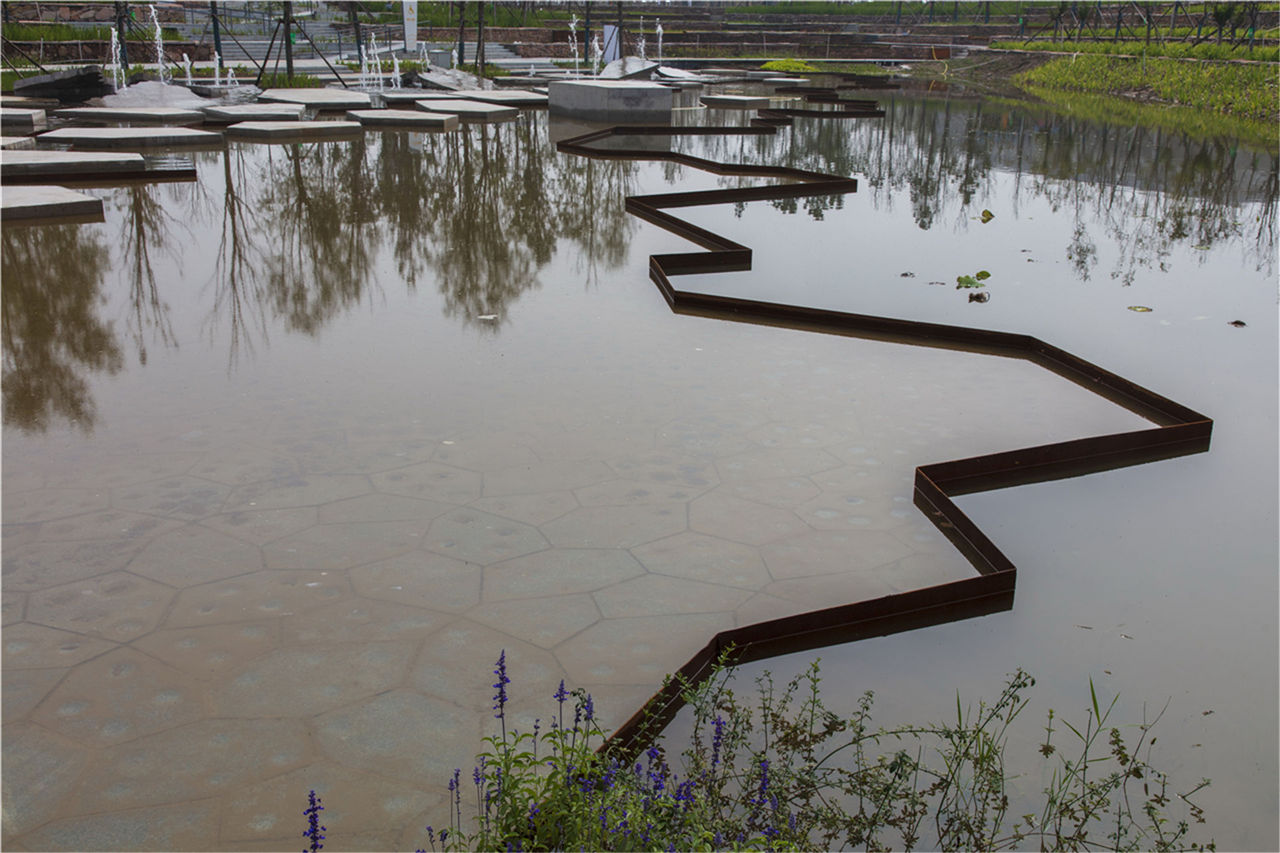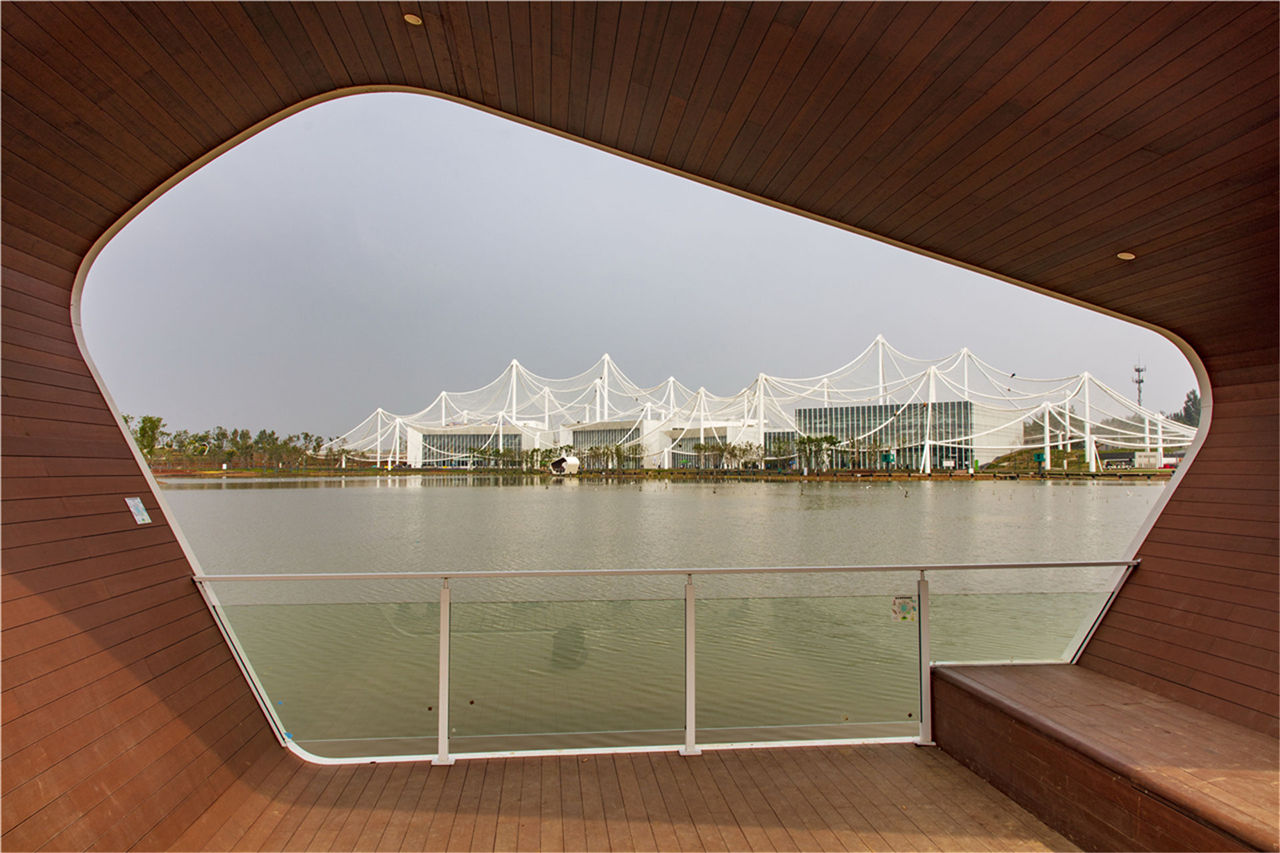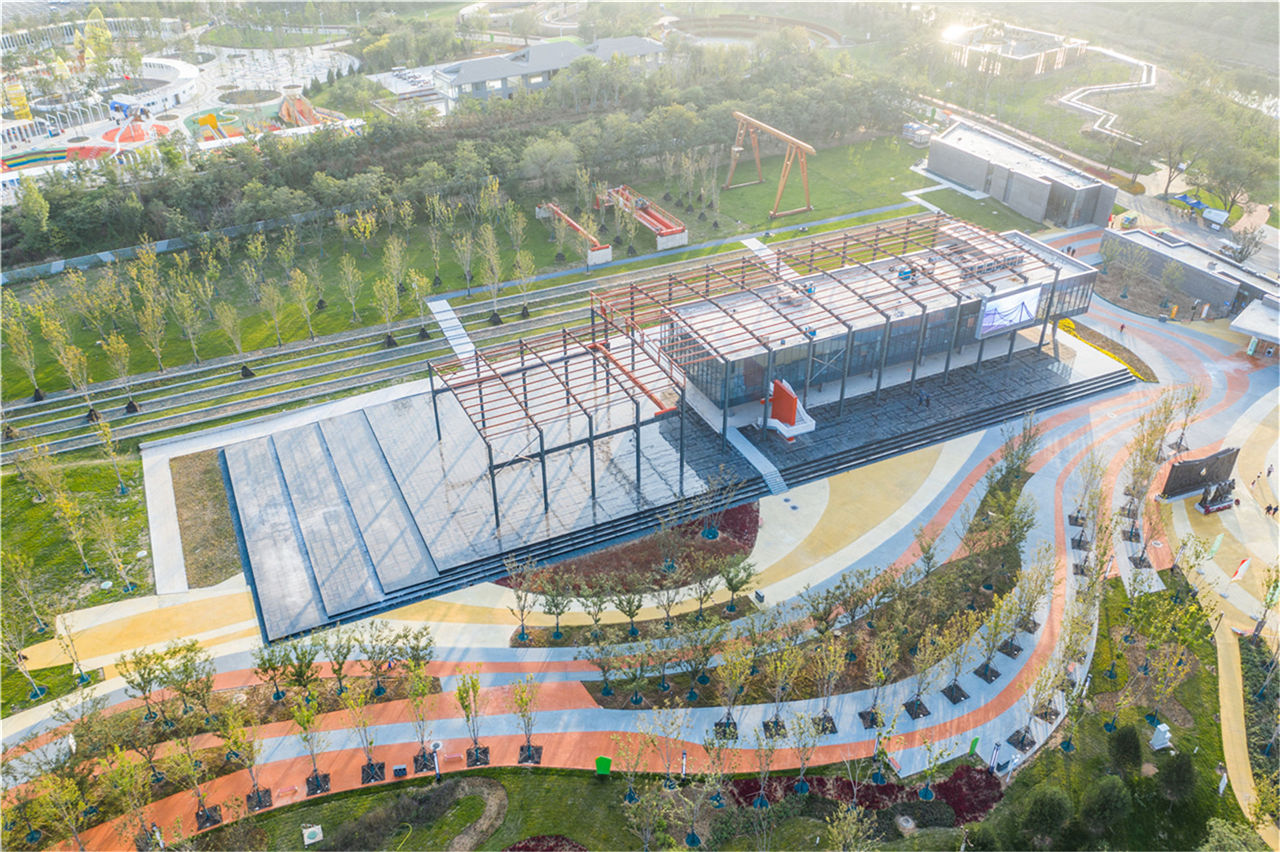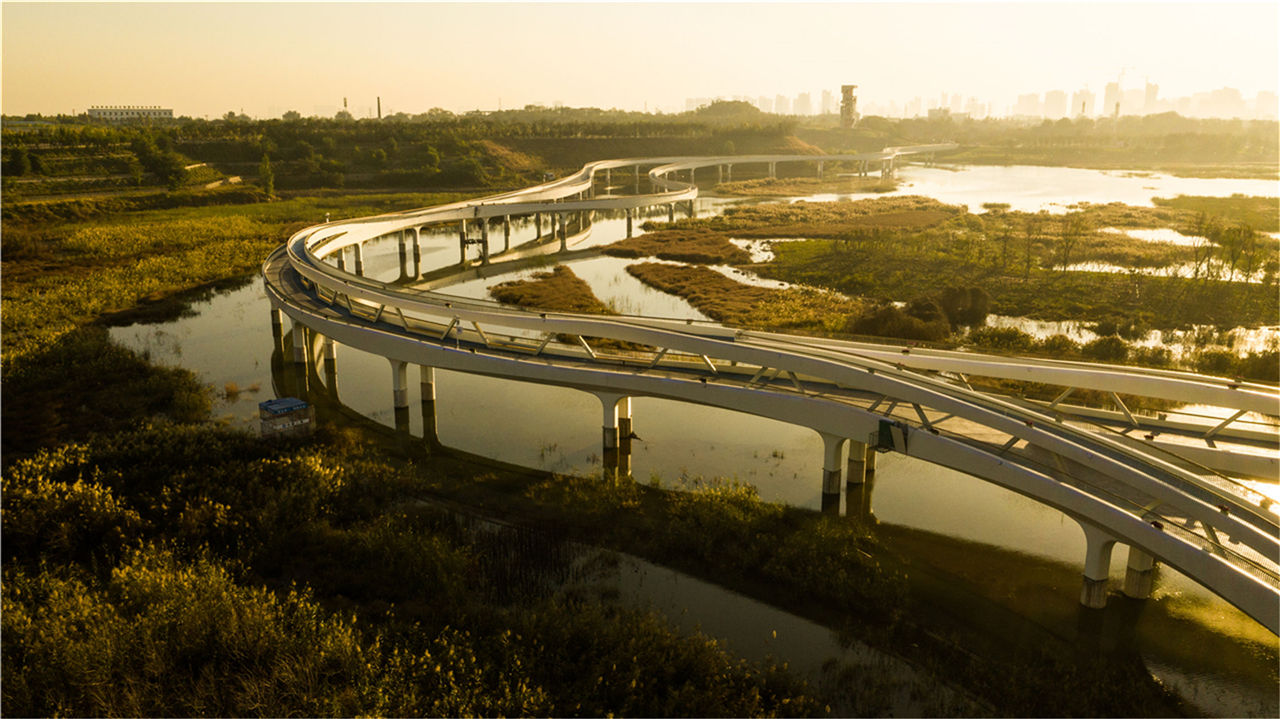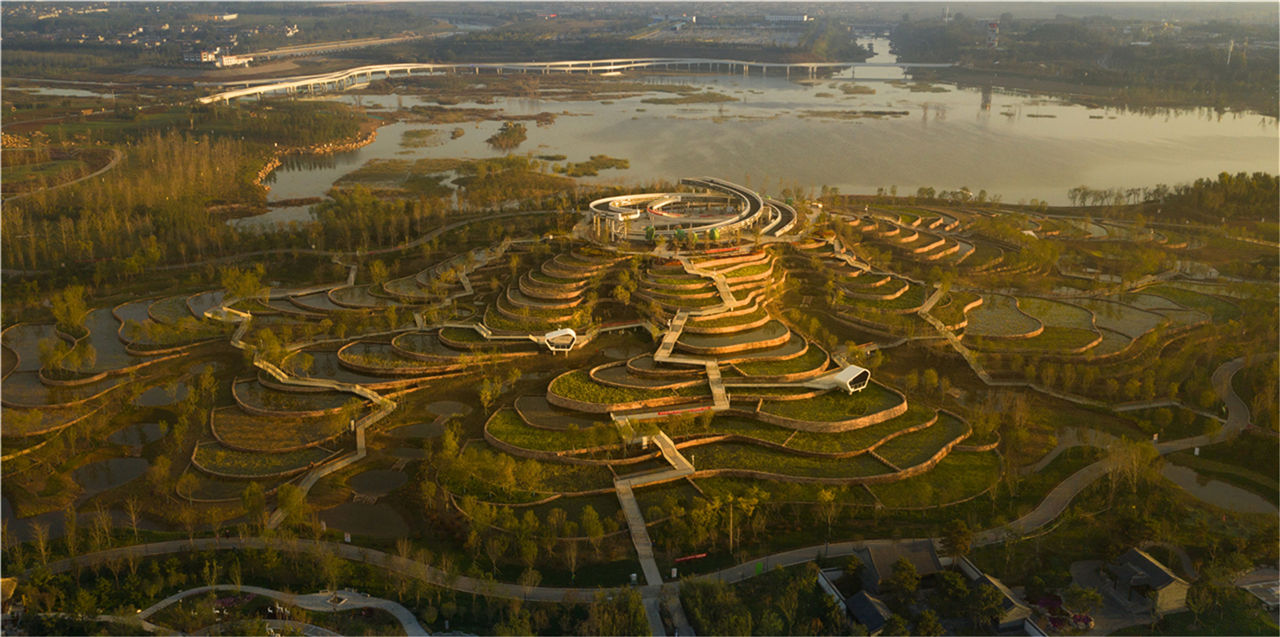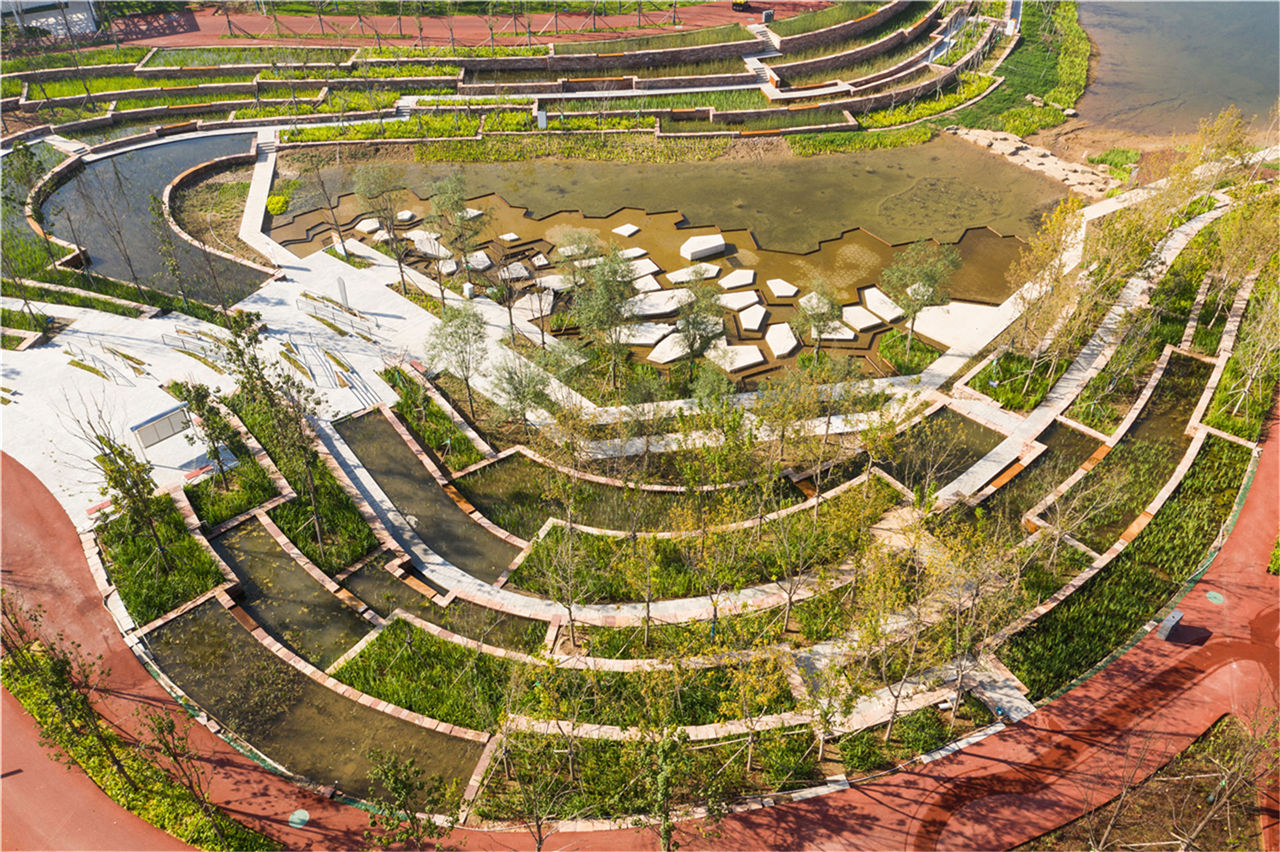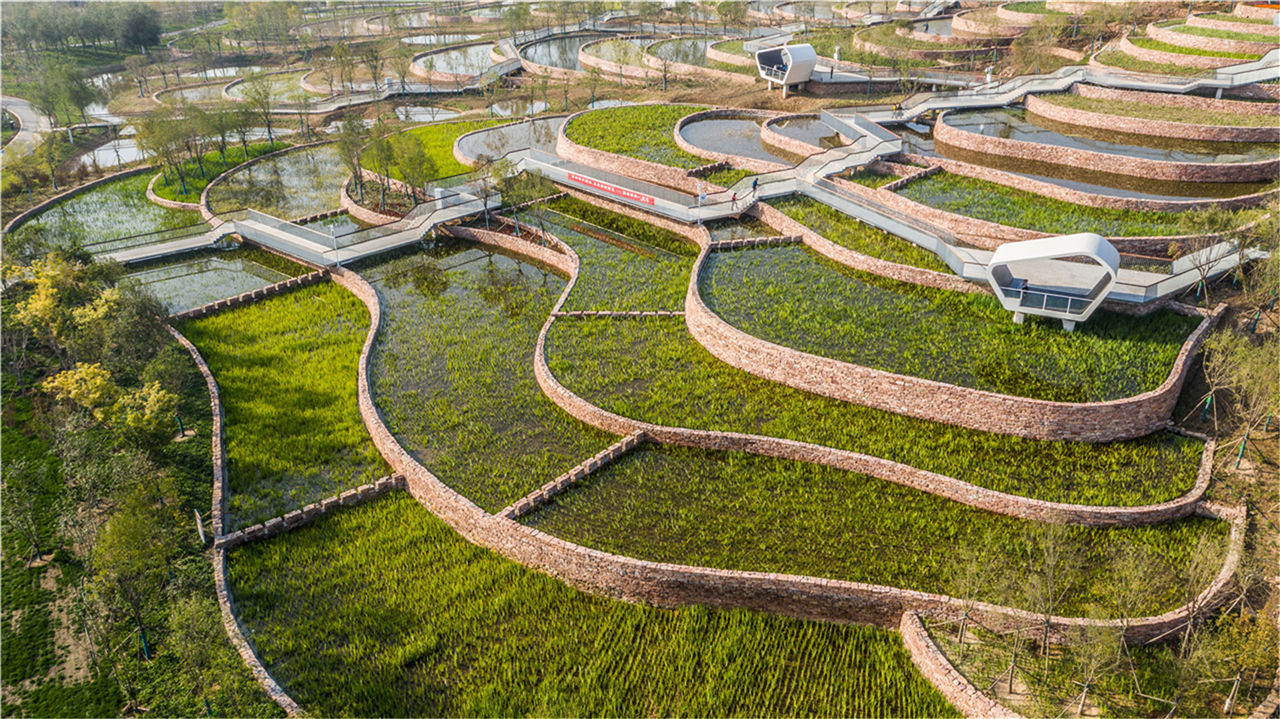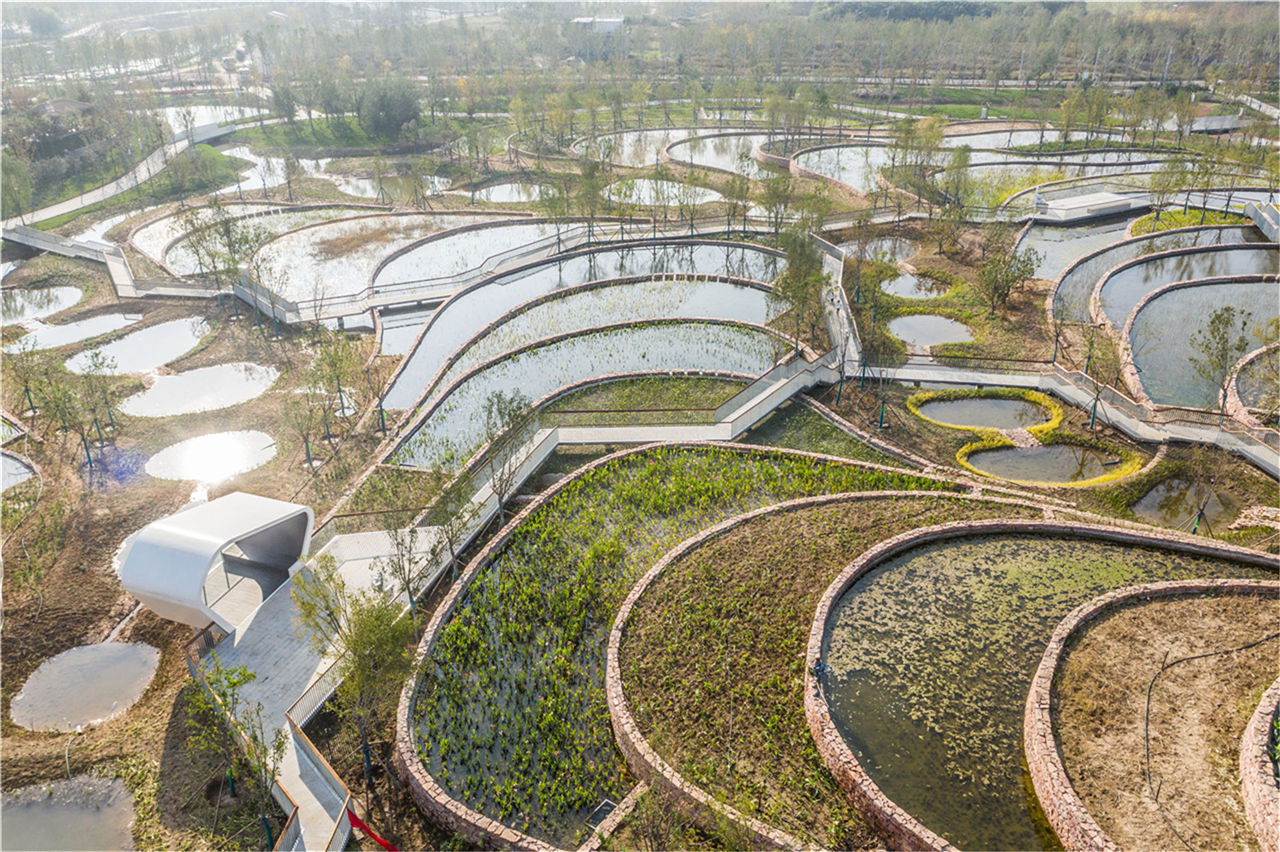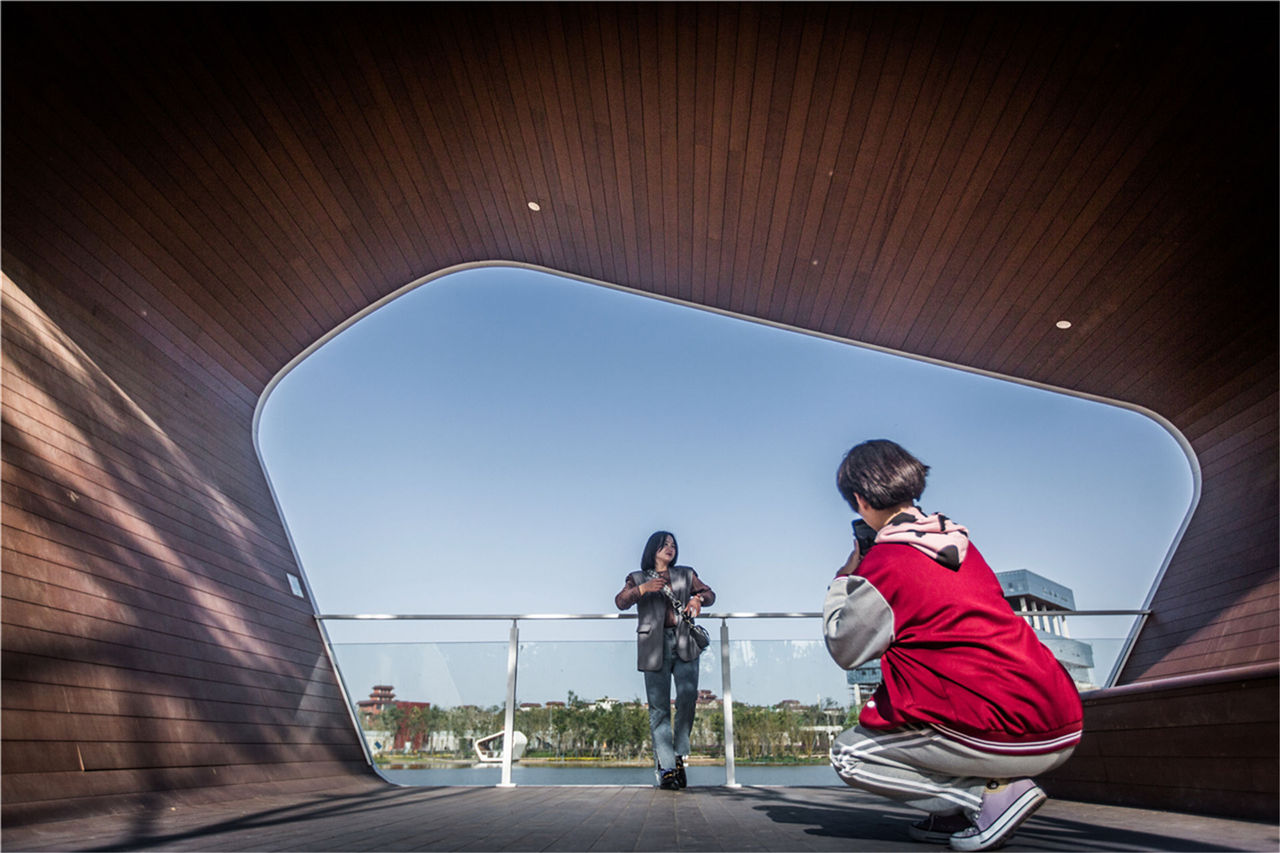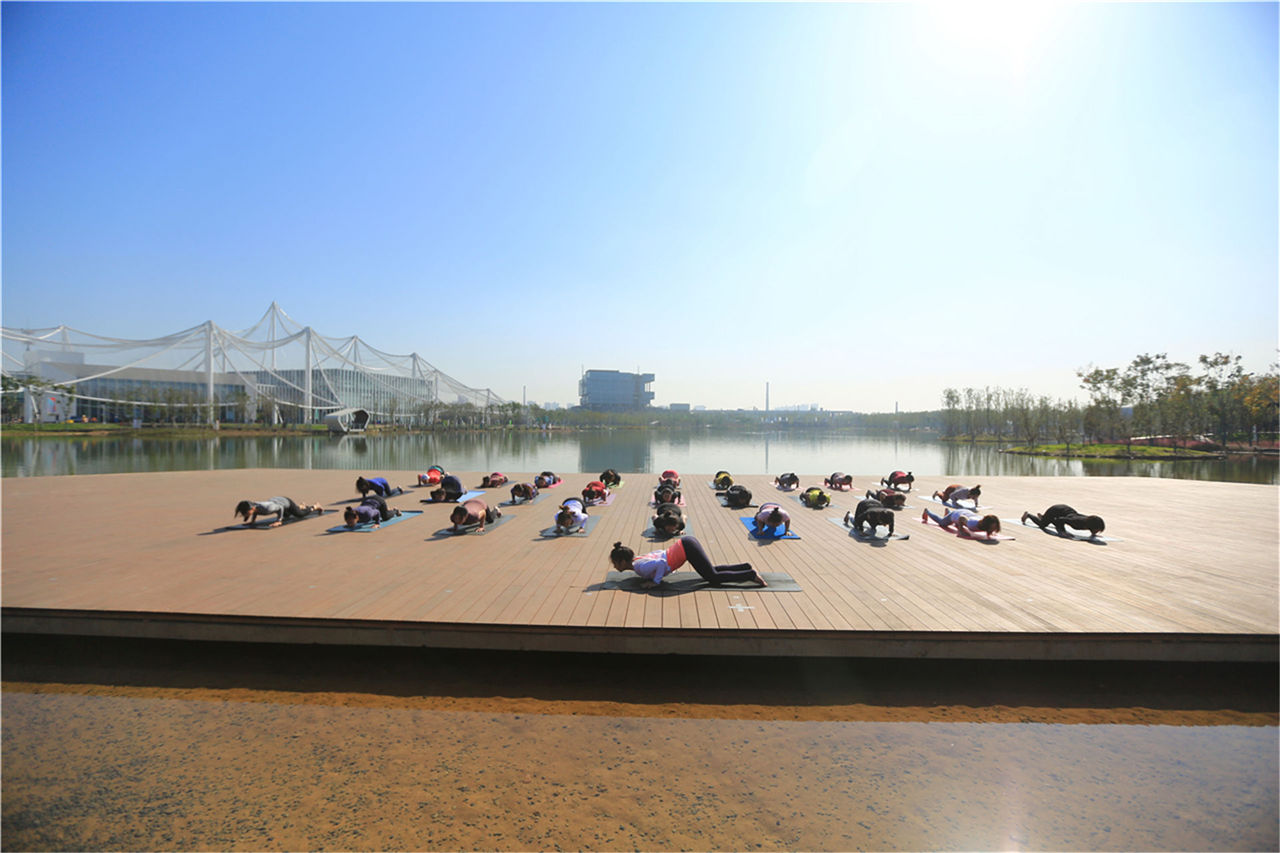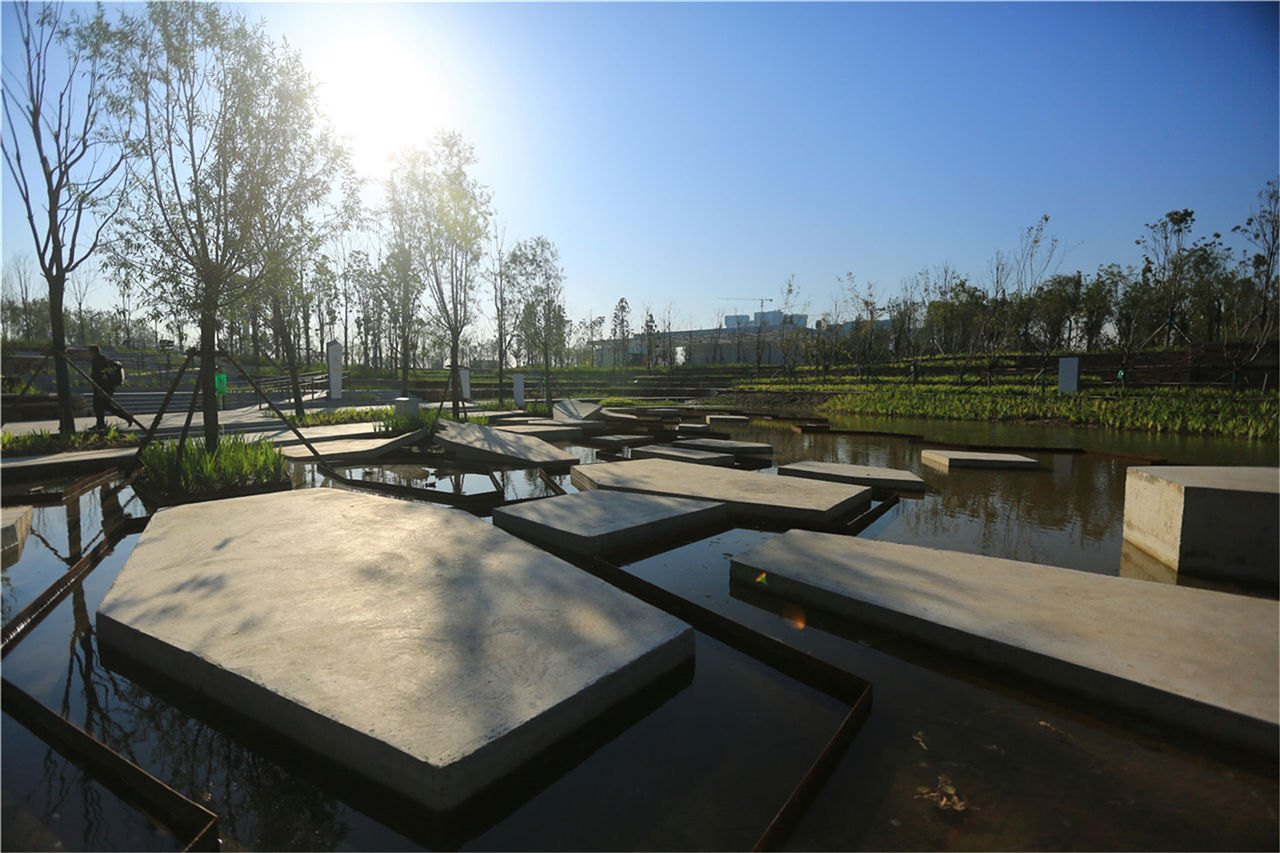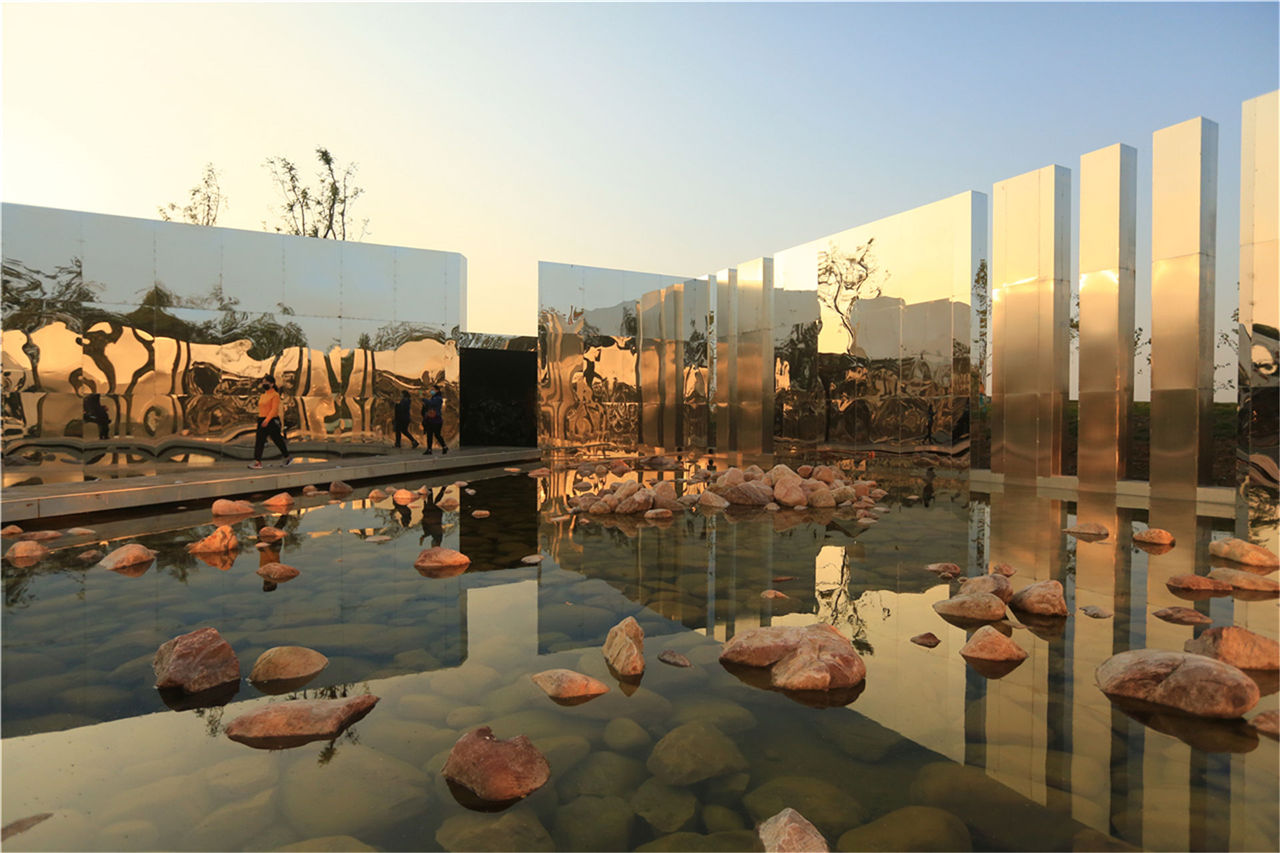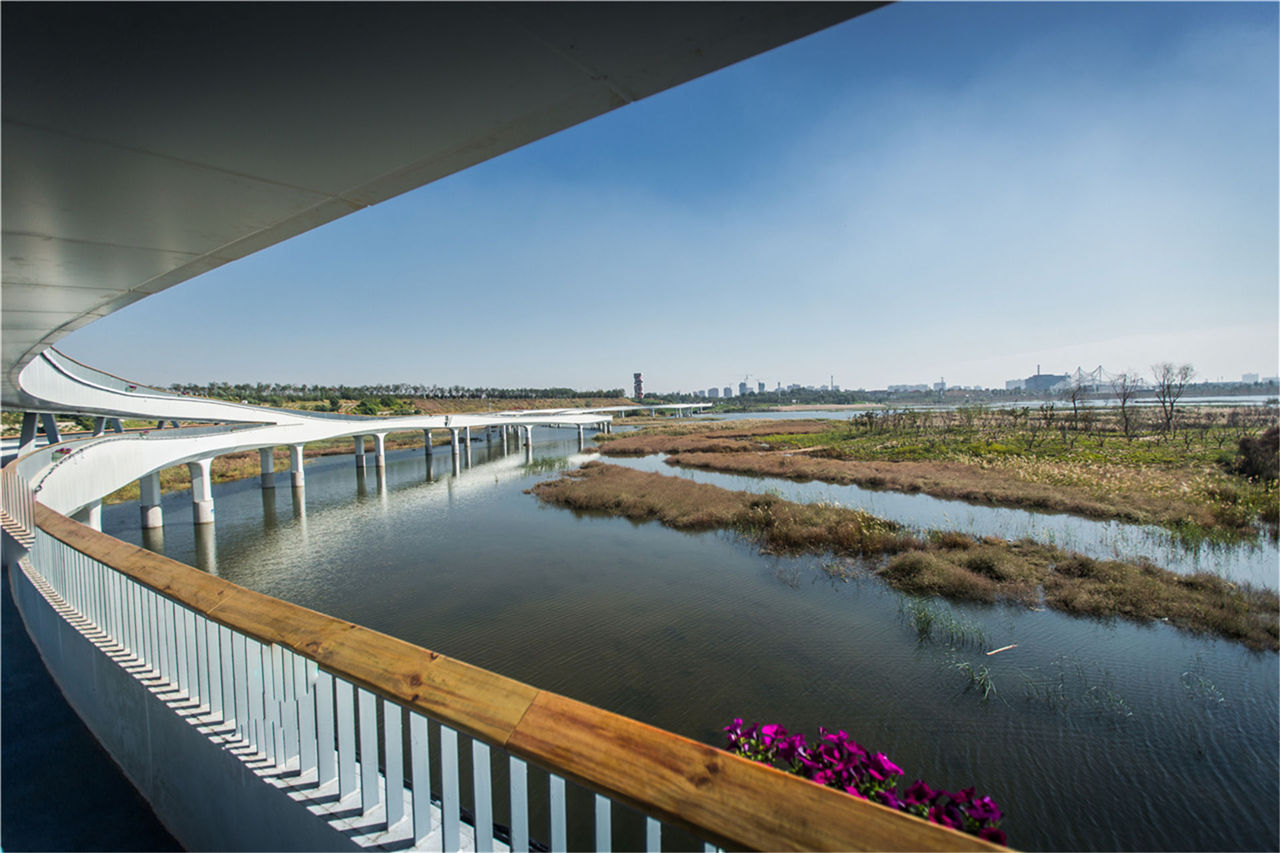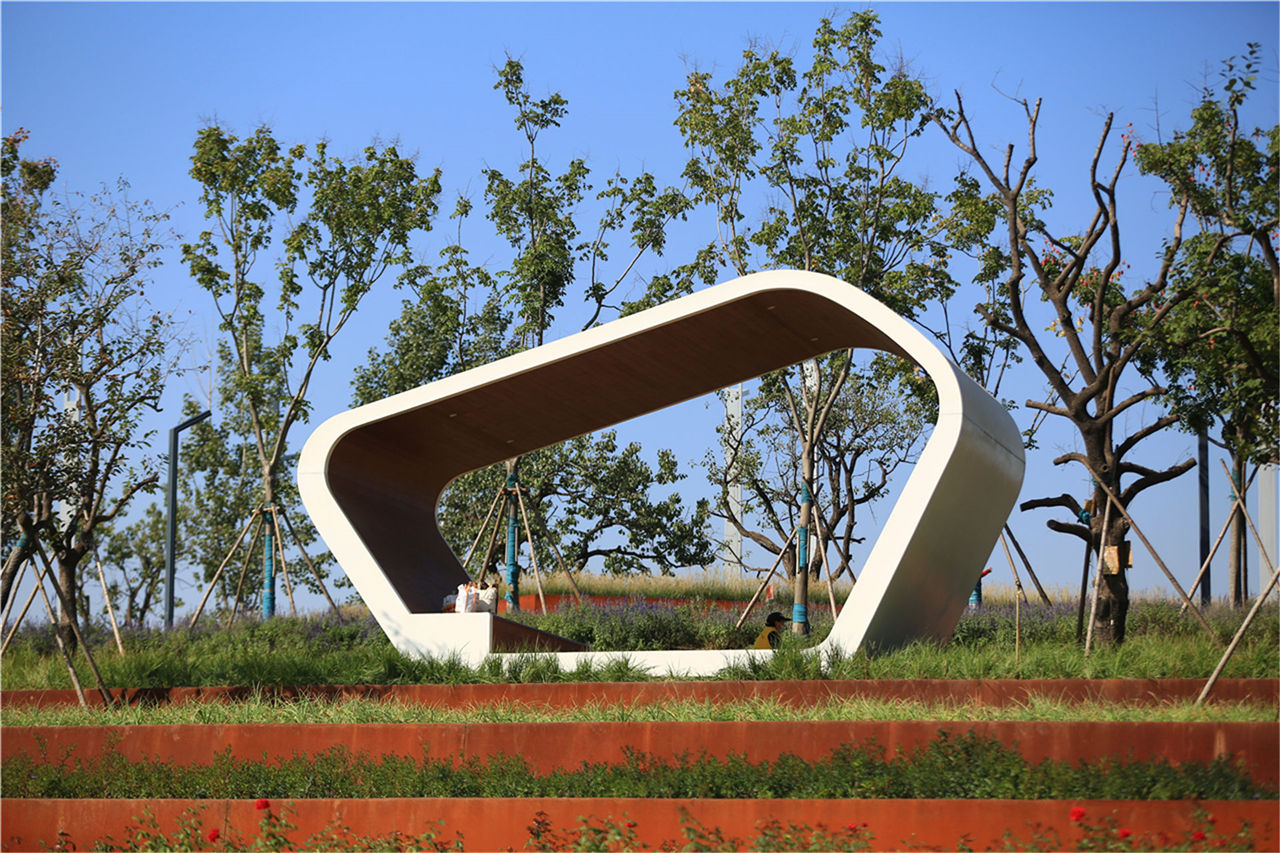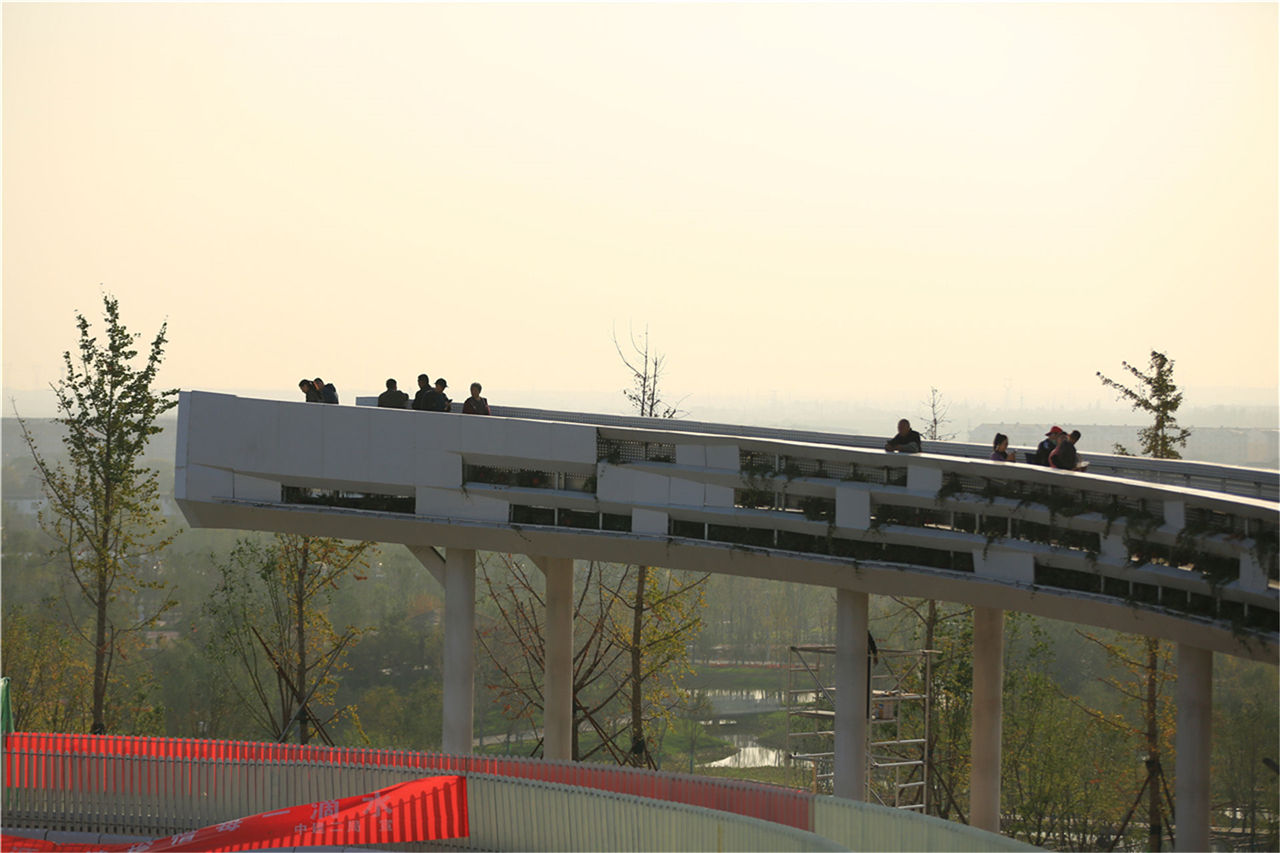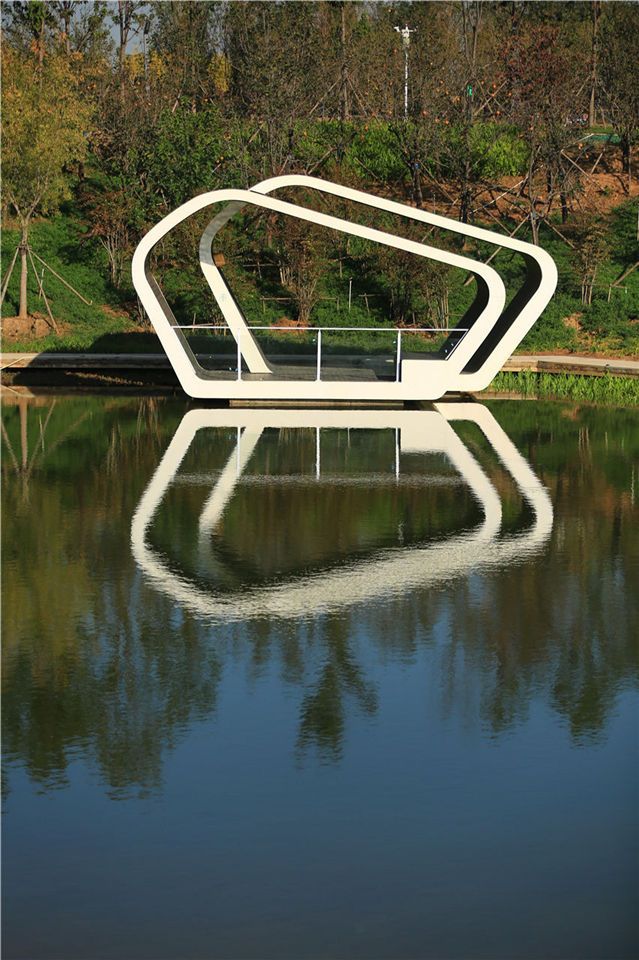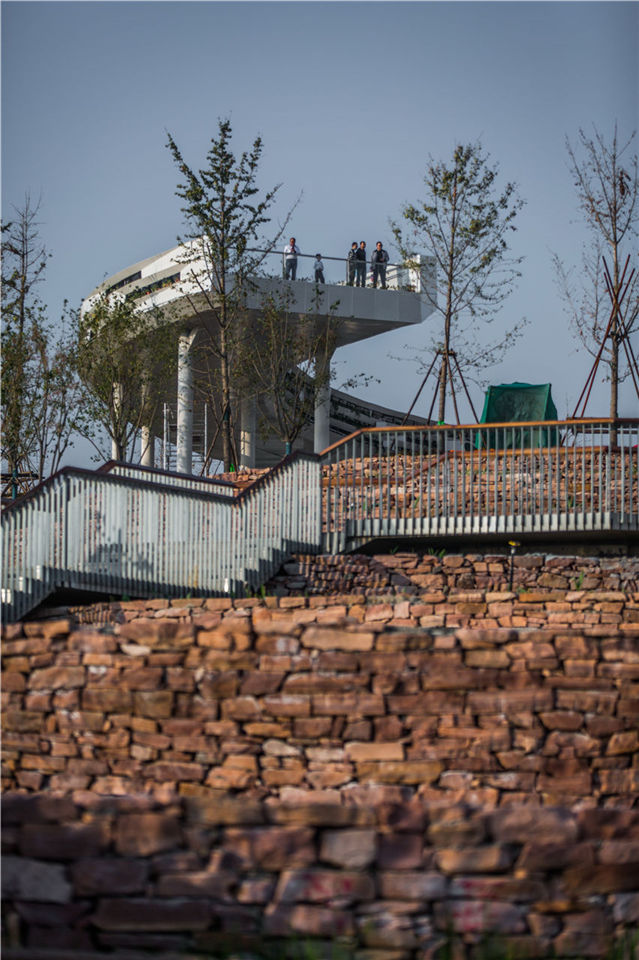The Handan Wastewater Purification Terraces
Project Information
- Project Location:
- China Handan, Hebei
- Project Scale:
- 325 Hectares
- Design Time:
- November 2018
- Build Time:
- November 2020
- Award List:
- 2022 Energy Globe National Award, 2022 Architecture MasterPrize Best of Best
- Related Papers
Project Profile
1. Project Statement
The "wetland terraces" is a reclaimed ecological water purification demonstration project, which belongs to the wetland conservation area of the 4th Horticultural Exposition of Hebei Province. No one could have imagined that the beautiful land now under our feet, was a "hill" made up of industrial slag and construction waste, which was the area with the most serious environmental problems before the Expo.
Now, when visitors come to the Expo, walking through the green bamboo path and winding up straight along the boardwalk to reach the circular corridor at the peak of the "wetland terraces", the amazing scenery of the whole Expo Park and the Handan city could be appreciated. The circular corridor atrium is a waterscape courtyard, with deep and shallow gravel at the bottom as decoration, like water droplets, clear and rippling. At the same time, the green bamboo planting pool is also built, with stone strips paved on the ground. The breeze changes as the sun moves, and the light sparkls and dances around.
2. Objective and Challenge
"Wetland terraces" is the ecological purification demonstration project of the Expo Park, which fully embodies the "green revival" design concept of the Expo.
The pretreated wastewater is pumped to the top of the "wetland terraces", where it flows through the terraces, which are artificial wetlands built in the form of "terraced fields" and "small ponds" from traditional Chinese agriculture. When the pretreated wastewater reaches the foot of the "Wetland terraces", it is purified and meets the needs for landscape uses.
3. Design Strategy
Ecological restoration strategies were adopted to transform the existing brownfields. Industrial slag and construction waste were filled and sealed, and part of the soil was replaced. Then, surface wetlands, subsurface wetlands, purification ponds were built, in the form of "terraced fields" and "small ponds". To achieve a better purification effect, surface wetlands and subsurface wetlands were laid out alternately. The pretreated wastewater would fall from the top of the "wetland terraces", infiltrated, oxygenated, then cleansed through the terraces before flowing into the lake at the foot of the "wetland terraces”. Meanwhile, a staggered and cascading landscape was also created.
Feature 1: artificial wetland forms - "terraced fields" and "small ponds"
The artificial wetlands were designed in the form of fields and ponds, and a total of 5 terraced strips and 5 pond strips stretching from the top to the bottom of the hill were created. When the pretreated wastewater flows through the wetland, nutrients were design to be taken up by plants, microorganisms, and substrates. The cascade would not only oxygenates the water, but also create a lively landscape atmosphere. At last, clean water would flow into the creek and lake at the foot of the "wetland terraces" and bring joy to people.
Feature 2: Purification process - Four wetland combinations
Taking into account the form of the wetland, the site’s height differences, water quality, the design team had selected four types of wetlands, namely oxidation ponds, surface flow wetlands, horizontal submerged wetlands and vertical submerged wetlands, for the purification process.
The four types of wetlands differ in purification capacity. The basic unit of oxidation pond - surface flow wetland - oxidation pond - submerged wetland was adopted, which was then repeated through the purification process.
Feature 3: Artificial wetland plants - beautiful and Water purifying
Plants play an important role in wetland purification and landscape creation at the "wetland terraces". Emerged plants with high purification capacity and good landscape effect were introduced into the wetland, including cattail, yellow iris, aquatic canna, purple loosestrife, pickerelweed etc. These plants have been very effective in the removal of suspended matter, nitrogen, phosphorus, chemical oxygen demand (COD) and biochemical oxygen demand (BOD). On the land, amorpha was selected as the predominant tree species, and microphanerophytes such as flowering peach, flowering crab were also employed. Coreopsis, winter jasmine flower, blacksamson Echinacea and iris were selected as ground cover plants.
Feature 4: the viewing spot at the peak of the "wetland terraces"- the circular corridor
At the peak of the "wetland terraces", a circular corridor rises from the greenery like two dragons circling and soaring. At this high point, a 360°panoramic view of the Expo Park is provided. Once stand at the top of the circular corridor, the whole water purification process, and beautiful views of the other areas of the park can be obtained. Besides, the circular corridor is not only a hilltop recreation area, but also a landscaped water purification facility. Beneath the special modular skin texture lies a three-dimensional water purification system, which connects to the artificial wetlands at last.
4. Conclusion
"In the past, the environment around the reservoir on site was poor and polluted, which have had a great impact on our life and work, and many people were reluctant to buy properties, even if they had to bear a very long commuting distance. Now, after the ecological restoration, the water quality has improved significantly, and it turned out to be a picturesque park, attracting more and more people to visit, and as a result many citizens are choosing to settle here". Talking about the changes here, the people in the surrounding villages are full of pride and happiness.
Today, the daily purification capacity of the "Wetland terraces" can reach 5,000 tons, which guarantees the water supply for the central lake of the Expo Park. The "Wetland terraces" has been providing a steady stream of clean water, it presents a landscape integrated with the nature, and has become a masterpiece of ecological restoration to promote green development.
